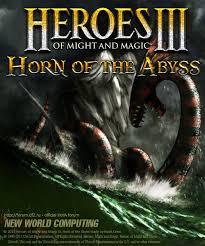Bill Hiatt's Blog, page 2
September 10, 2022
Are Lowering Qualifications an Answer to the Teacher Shortage?
Though we are accustomed to thinking of teacher shortages as a result of the Covid 19 pandemic, in fact, the supply of teachers has been inadequate for some time. For example, this article from University of Massachusetts Global points out that during the 2016-2017 school year, 80% of California school districts reported a shortage for the 2017-2018 school year–several years before the pandemic. 90% of those districts reported that the shortage was worse than it had been the previous year.
Nor is this a problem exclusive to California. The same article reports a combination of increased turnover and a decline in the number of people completing teaching training programs have led to shortages all across the country, particularly in certain high-demand fields like special education, math and science.
The Band-Aid Solution: Lower QualificationsEducation Week reported that last fall, 50% of all districts struggled to fill all their teaching positions and that the situation is expected to be worse this coming year. Twelve states have already lowered credentialing requirements for next year. Keep in mind that some of these states and many others have been lowering requirements for years in an unsuccessful effort to solve the problem.
Some state characterize what they’re doing as eliminating redundant requirements, such as using tests to assess competence for teaching candidates who have successfully completed related coursework. They could be correct in this assessment–we’d have to see before and after data on teacher effectiveness to know whether or not that claim is accurate.
I’m more concerned about the states that drop requirements completely. A number of states, California included, have been issuing emergency credentials for years. Practices vary, but generally, an emergency credential can be issued to someone with a bachelor’s degree. Some states also require that the applicant be in a teaching credential program to be eligible.
Problems with This SolutionPragmatically, such a process can be justified on the theory that a teacher (even if less qualified) is better than no teacher. In a true emergency, there’s no question about which is better. But should we be running our schools in a perpetual emergency mode?
It’s important to note that this emergency mode is not stable but tends to lead to continued lowering of standards. This year, Florida is breaking new ground (and not in a good way) by not not even requiring a bachelor’s degree of military veterans. In 2018, Florida adopted a program allowing veterans to teach in certain subjects with a teaching credential providing that they had a master’s degree in the field in which they would be teaching. The current approach, effective July 1, allows veterans to teach with no college degree as long as they have completed a certain number of college units with at least a (not particularly high) 2.5 GPA and have passed a state subject exam for bachelor-level subjects. We’d need to see a study of the difference between applicants who take the exam and applicants who actually have a bachelor’s degree in order to judge whether or not that’s a reasonable accommodation.
Regardless, the biggest problem with all of these solutions is the underlying assumption that it isn’t really all that important to be trained to teach. This isn’t intended as a criticism of veterans or any other group, but the reality is that teaching, like any other profession, requires skills that people don’t necessarily develop if they aren’t fully trained for that purpose. I’ve known plenty of people over the years who might have had good subject matter expertise but couldn’t effectively teach what they knew to others. Different skill sets and different training are involved.
That’s not to say that subject area knowledge isn’t important. A teacher who knows teaching methodology but not the subject matter being taught would obviously be a disaster. But it’s also important to note that someone who barely scrapes through college (or perhaps hasn’t even completed a college degree in the subject) isn’t going to be very effective, either. Lowering qualifications nearly always reduces the specific teacher education requirements but, as we’ve seen, can also result in reducing the level of subject area knowledge as well.
How important is it to have well-trained, knowledgeable teachers in classrooms? Many studies confirm that student achievement increases substantially when teacher quality increases. Education Next has a thorough article about how contemporary research confirms earlier findings on teacher quality. For example, it quotes ten different studies that all find student achievement in math and/or reading are significantly higher in classrooms with teachers at the 85th percentile than in classrooms with average teachers (those at the 50th percentile). The same article cites a Stanford University study by Raj Chetty and others which shows that high-quality teaching can lead to increases in future graduation rates, college attendance, employment, and wages. Amazingly, this finding holds up even if we’re only talking about one high-quality teacher. In other words, even a one-year difference in teacher quality continues to affect students for many years.
Not only is teacher quality a substantial contributor to student success, but considerable evidence shows that it is the most important school-related factor. For example, an article from Edutopia (George Lucas Education Foundation) says that, “Great teachers help create great students. In fact, research shows that an inspiring and informed teacher is the most important school-related factor influencing student achievement, so it is critical to pay close attention to how we train and support both new and experienced educators.”
All of that said, there is some disagreement over what factors make an effective teacher. There is broad agreement on certain personality variables, as there is on subject area knowledge. In the latter case, the specific classes an instructor is teaching doubtless make a difference–one needs a greater depth of knowledge to teach an advanced course than a regular one, for example.
There is more disagreement over whether educational factors like advanced degrees affect teacher quality. Per the first source cited, the Coleman Study from about fifty years ago supported the idea that a teacher’s education background is important, particularly a teacher’s performance on a verbal skills test, and the teacher’s highest educational level. On the other hand, in recent years, some studies have shown an advanced degree to not have that much impact. The article suspects that may have something to do with the fact that school district salary schedules reward masters degree holders, even if the degree is in a subject other than the one(s) the teacher is responsible for teaching.
Every human being is unique, so it’s not possible to say that every teaching candidate taking shortcuts is going to be worse than every candidate that doesn’t. It’s even possible that some people take to teaching naturally, without needing much training–though I’ve never met anyone who claims that distinction. But it think it’s fair to say, based on what evidence is available–as well as dealing with teachers with a wide variety of backgrounds–that lowering entry requirements is at best risky. Perhaps it can be justified as a temporary stopgap but certainly not as a permanent feature of the system.
Other Possible SolutionsThere is no one easy solution to this problem. But the bottom line is simple–as a society, we need to make teaching more attractive as a career choice.
The teacher shortage wee have today is a product of two forces I’ve mentioned earlier: a reduction in the number of people training to be a teacher, and poor retention rates for those who do become teachers. I would say it’s probable that some of the same factors influence both problems.
However, I fear this post would become too long if I did a detailed analysis of all the factors involved. That really deserves a blog post of its own. But it doesn’t seem reasonable to end this post with no discussion of solutions. I’ll give you a brief rundown of some the issues and hopefully flesh them out more in a subsequent post.
First, teachers need to be compensated better for the increasingly complex jobs that they do.It’s not that teachers are necessarily paid badly. Some school systems pay pretty well in an absolute sense.
One issue with teacher pay is that it is based on assumptions, some of them unconscious, about what teachers do and how long it takes them to do it. Almost all of the public school teacher contracts I’ve looked at are based on a seven and a half hour day or something close to that. However, most studies on the issue come out somewhere closer to ten hours as the real teacher workday. For example, EducationWeek cites a recent Merrimack College Study that shows the average teacher works a 54-hour week (14 hours more than what would be considered a typical fulltime job, or 10.8 hours per day if one just counts the school week, 9 hours per day if one works 6 days, or 7.7 if one works 7 days.) To be clear, no public school has more than a five-day formal week, but preparation and grading often extend into the weekend. (At my peak as a high school English teacher, I worked about ten hours per day on weekdays and four hours per day on weekends, for a total of sixty hours per week. Sometimes, I stopped early on Friday and added more weekend time to compensate. Anyone wondering why I never got married? Anyone wondering why I retired at fifty-eight?)
It’s also important to keep in mind that teachers never earn overtime, at least not in any system I’ve ever heard of. Some extracurricular jobs are paid extra, coaching being a good example. But an English teacher with all those essays to grade still gets paid as if he or she were done after that 7.5 hour day ends.
“Ah, but you get a lot of vacation time,” someone will say. Well, yes–on paper. But, as with the length of the day, the number of days off or number of weeks of vacation are deceptive. A good chunk of winter break is often spent polishing off the last of the college application essays and, depending on the school calendar, catching up on grading . A similar fate often befalls spring break. Summer break which shrank from twelve weeks to ten early in my teaching career and then eroded further when in-service days were shoved into it, is often consumed at least partly by continuing education classes (required in some states), as well as curriculum planning for the following year. I think the figures in this EdTech article are too high, but it gives you a rough idea of the kinds of things people might do during the summer. (Teachers typically get one paid day to do things like set up their classrooms, and much of that is usually consumed in meetings. Otherwise, ever single piece of preparation and set-up for the next school year is done on a teacher’s own time.)
Is it possible to get by with working fewer hours? Yes. A lot depends on factors such as subject area, grade level, years of experience, and other considerations. Keep in mind that the 54 hour figure is the median, not a guarantee of what each and every teacher does. There are some working fewer hours–and some working more.
But hours are not the only factor that makes teaching more demanding than it might seem. Not only does subject matter expertise in some areas require a lot more to keep up with than it used to, but teachers are required to have a wider range of skills than before, They must not only know their specific subject matter, but also educational technology and how to deal with special-needs students, among other things. And, since schools are now expected to compensate for shortcomings in the students’ out-of-school lives, teachers need to know a number of other bits of psychology and social work.
A final consideration is how teacher salaries compare to salaries in other education-related fields. That proves to be another reason teachers leave teaching. There are many job opportunities outside the classroom that lead to higher salary levels than one can get in the classroom. I’ve seen people move to positions as publisher sales reps (for textbooks), curriculum developers, education directors at museums, corporate trainers, and many other professions. All of them were making more money than they had in the classroom within six months, some of them immediately.
Second, teachers need to be more involved in the decision-making process at all levels.We have known for a long time that happy employees tend to be better employees. We have also known that a certain amount of control is an important contributing factor in employee happiness. For example, take a look at this Business Insider article. Yet we sometimes forget that teaching works the same way other career paths do in this regard. Teachers also function better when they are happy, and teachers are usually happier when they have some control over instruction.
Thought it makes sense to have curriculum standards in each subject area, it also makes sense to give teachers input into those standards. The same thing is true of building-level policies regarding discipline, grading, and other important matters.
But in the real world, that often doesn’t happen. National and state standards often become political footballs whose fate is determined by who won the last election or what must be done to win the next one rather than by what students need to learn and be able to do. A number of these decisions get made with little or no teacher input, and sometimes in open defiance of teacher recommendations.
Shameless Plug: For a somewhat more detailed treatment of how politics affects education, check out my book on that very subject:
The situation isn’t necessary better at the school district and school level. While some local school board members may listen to teacher input, many tend to listen only in cases in which they don’t already have an opinion on an issue. In other cases, they don’t hesitate to bulldoze their way to the solution they want, even if every teacher with relevant knowledge is telling them that this is a bad idea.
That’s not to say that school board members don’t respect teachers–in abstract terms. They often praise teachers in general and give shout-outs to particular teachers who’ve done something they appreciated. Sometimes, they even play lip service to the importance of teacher input. But as always, actions speak louder than words.
As for administrators, since their jobs are dependent upon the whims of the school board, even those who have a participatory management style are often constrained in ways that make it impossible for them to use it.
Any way one looks at it, the situation is terrible. There’s no question that it contributes to teacher burnout and turnover, exacerbating the shortage. But even those teachers who remain may not be as effective as they would have been in an environment more open to their voices.
In School Leadership That Works: From Research to Results, the authors, citing Silins, Mulford, and Zarins, write that, “a school’s effectiveness is proportional to ‘the extent to which teachers participate in all aspects of the school’s functioning–including school policy decisions and review–share a coherent sense of direction, and acknowledge the wider school community.'” In other words, not including teachers in decision making reduces the effectiveness of the school.
It’s not hard to see why this would be true. School board members, though they often study the issues before them, vary widely in terms of their previous experience with education. A few are or have been teachers. A much larger group have experienced the classroom only as students. It would be surprising indeed if they had the same insight into curriculum and instruction as veteran teachers do.
Administrators, of course, have more experience, but from what I’ve seen, some quickly forget the realities of the classroom. Many more are experts in the subjects they taught themselves, but not necessarily knowledgeable in other areas. That doesn’t mean that they can’t support teachers in those areas. It does mean that many of the teachers are likely to know more about those areas than the administrators do. Medium-sized high schools typically have three to four administrators (one principal and some assistant principals). Even if each administrator has experience in a different academic department, that leaves most departments unrepresented.
I can illustrate this problem by mentioned the various administrators who supervised the English department in my former school. For much of my early career, my supervisor was a former English department chair, but that was only true once during the latter half of my career. Otherwise, the supervisors included a former elementary school teacher, art teacher, dance teacher, counselor, and physics teacher.
There is a wealth of evidence supporting the idea that teachers should be more involved in decision making, too much to include in what is already a long post. Below I’ve listed a couple of useful titles for those of you interested in reading more.
Suggestions for Further ReadingAugust 26, 2022
Inspiration, Part 1
 (copyrighted by MoVille and licensed from www.shutterstock.com)
(copyrighted by MoVille and licensed from www.shutterstock.com)My first published novel, Living with Your Past Selves, went live on September 9, 2012. As I near the tenth anniversary of my publishing adventure, I’m thinking a lot about what inspired me to write in the first place and what has influenced the way I write.
I decided to write about this on the blog because I sometimes get questions about my inspiration but also because a discussion of this issue might be useful to other aspiring writers. Everyone’s journey is different, but sometimes, knowing about the experience of others can help us to better understand our own.
The discussion below is built around questions readers and friends have asked me over the years.
What Inspired You To Write? (copyrighted by Inna Kot and licensed from www.shutterstock.com)
(copyrighted by Inna Kot and licensed from www.shutterstock.com)It’s a little hard to give simple answer to that question since I’ve been writing for fun ever since some point in elementary school.
That said, I can identify some contributing factors:
A Love of Reading (copyrighted by Baloncici and licensed from www.shutterstock.com)
(copyrighted by Baloncici and licensed from www.shutterstock.com)My parents worried when I didn’t seem to pick up reading skills as fast as I should have, but I turned out to be a late-bloomer on an epic scale, like an empty meadow producing thousands of wildflowers in one night. Once the necessary skills started clicking inside my head, I read everything I could get my hands on. Since I’d inherited the collecting gene from my parents, I also bought as my books as I could afford, a habit that continued until I literally ran out of space (at about the 8,000 book mark, by which point every available wall space had a bookcase, including every wall in the extra room I’d added. Then I started grabbing ebooks, which required only digital space.)
Needless to say, you don’t need to create a sizeable personal library to become a writer. Public libraries are always an option that can fit budget and space constraints–but you do need to be a reader, and it helps to be an avid one. We learn much of the craft of writing from reading. Writing classes can help, but they will only get you so far.
A Desire to Write (copyrighted by Oleksii Sidorov and licensed from www.shutterstock com)
(copyrighted by Oleksii Sidorov and licensed from www.shutterstock com)This may sound like a circular answer to the question–I was inspired to write by being inspired to write. Not every reader develops such a desire, though. I think the other critical ingredient is a desire to share with an audience.
I suspect every avid reader creates stories in his or her head, but some are content to leave it at that. I’ve even known a few people who wrote but didn’t seem to have much interest in sharing their writing. It takes more than just reading and imagination to make that final step. Even in ancient times, there were people who were content to sit around the fire and listen to the storyteller without even the slightest desire to be the storyteller.
For whatever reason, I decided I want to share. Doubtless, that also contributed to my desire to teach. That’s a very different kind of sharing, but some of the skills involved overlap.
If you don’t like to read yourself, you probably aren’t even considering writing for an audience. If you love to read, you might want to write for an audience, but don’t try to force yourself. If you feel motivated to share, adopt a writing schedule that leaves time in your life for other things you need to get done. Don’t spend more money than you can afford. And see what happens. It’s likely that if you feed driven to write, you won’t be satisfied until you’ve at least tried it.
Why Did You Start with Fantasy? (copyrighted by Warm-Tail and licensed from www.shutterstock.com)
(copyrighted by Warm-Tail and licensed from www.shutterstock.com)Since I was an omnivorous reader, that’s a good question. I could have gone in a number of directions.
Some practical considerations affected my choices. For instance, I love history, but the only way to break new historical ground is to be part of history or to be a college professor with the backing of a university. The first was not entirely in my control. The second clashed with my desire to teach at the high school level, which wasn’t as conducive to original research but allowed for a personal connection between teacher and student.
I read large amounts of literary fiction, particularly when I was teaching English, but literary fiction is not a genre in which self-published authors do particularly well. You really need an appropriate publisher–and probably get shortlisted for one of the well-known literary prizes–to have much of a future in that area.
The genres I have read for pleasure over the years are fantasy, horror, science fiction, and mystery, in that order. That made fantasy a logical starting place.
 (copyrighted by kkssr and licensed from www.shutterstock.com)
(copyrighted by kkssr and licensed from www.shutterstock.com)Although my earliest attempts, particularly an unpublished novel from 1981, The Wanderer, had been epic fantasy, I ended up being more drawn to urban fantasy. I’m not sure why. But my urban fantasy does tend to be longer and more complex than the norm, which I think is probably an unconscious salute to epic fantasy. And yes, that probably does lose me some urban fantasy readers, but there’s a limit to how far I’m willing to reshape myself to be more commercial. More about that in a moment.
 (copyrighted by Wacha Studio and licensed from www.shutterstock.com)
(copyrighted by Wacha Studio and licensed from www.shutterstock.com)Since I was used to working with teenagers, having spent most of my adult life as a high school teacher, starting with young adult fantasy was perhaps inevitable. But that also had its commercial pitfalls. I was most comfortable writing about male protagonists, but about 80% of high school readers are female. (Having been exposed to a lot of male readers in AP and honors classes at my former high school, I honestly didn’t know that was the case.) Fortunately, a lot of people who don’t fall in the high school age range also enjoy YA fiction.
Why Aren’t You More Concerned about Commercial Considerations? (copyrighted by houchi and licensed from www.shutterstock.com)
(copyrighted by houchi and licensed from www.shutterstock.com)It’s not that I don’t care about selling books at all. One of the reasons for my gradual shift from young adult to new adult fiction was the issue I mentioned in the preceding paragraph. But moving from characters in their teens to those predominately in their twenties, especial in a series in which they were the same people grown older, wasn’t a hard shift.
How concerned a writer is about commercial considerations is a function of that writer’s goals. If your goal is to quit your day job, then writing in a commercial way is a necessity. That means studying trends, reading bestsellers in your genre, and adjusting your structure to match what seems to work. There’s absolutely nothing wrong with that if you are comfortable with it and do it well.
That said, I can think of a number examples of doing it poorly. The ideal would be to create original work that follows the current trend lines. What often seems to happen, though, is that the originality part gets lost, and what we end up with is a large number of formula books that check all the boxes but don’t bring anything fresh or new to a genre.
That’s by no means inevitable. For example, in a future blog post, I’ll look at school-of-magic kind of stories that are far more than just attempts to capitalize on the trend created by the Harry Potter books. Each one approaches the basic subject in an entirely different way. That’s what I would hope someone writing commercially would strive to do.
But there’s no denying that it’s easier to be original if one writes what one wants to write. At some point, I made the choice to tell the stories I wanted to tell. That doesn’t mean I never think about ways to tell the story better. I think about that all the time. At some point, that might bring more commercial success. But I’m doing to bring greater pleasure to my readers, hoping that commercial viability may follow, rather than the other way around.
 (copyrighted by CL Shebley and licensed for editorial use from www.shutterstock.com)
(copyrighted by CL Shebley and licensed for editorial use from www.shutterstock.com)When I first started writing, my goal was to share my stories with readers and hopefully entertain them. I’ve accomplished that goal, albeit on a small scale. (At this moment, I’ve sold 11,123 books on Amazon and had 2,999,945 pages read in the Kindle Unlimited Program. That number of pages probably represents something like 6,000 more books read, though it’s hard to tell without sitting down and calculating reads for each title separately. If we add a sprinkling of sales from other vendors and audiobooks, the total would be somewhat higher.)
Whether or not that result is a success depends on how you measure. Most self-published authors sell only a few copies. Even some traditionally published authors don’t make huge sales. So in some ways, my performance is above average. But, particularly when you divide it over ten years, it’s clear I’m not generating anything like enough income to live on. And it’s less than some bestseller authors do in a month–or even a week.
Though I’ve been writing for years, by the time I started publishing, I was nearing the end of my teaching career and retired shortly after. Consequently, making enough money to quit my day job was never an issue (and I wouldn’t have wanted to quit teaching, anyway).
 (copyrighted by Ken Wolter and licensed for editorial use from www.shutterstock.com)
(copyrighted by Ken Wolter and licensed for editorial use from www.shutterstock.com)Right now, I’m keeping my options open. I wouldn’t say no to a good offer from a major publisher or a movie producer. I’ve certainly daydreamed about being on the bestseller list or having a major movie made from one of my books. But I had a moment, specifically when Different Lee became my best book launch so far, when I began obsessing over sales and fretting about the future rather than dreaming about it.
After a while, I realized that I’d lost focus on my original goal–bringing pleasure to readers–and was making myself miserable trying to replicate the feelings I’ve had during the early Different Lee days when it seemed as if I might be about to have major success.
Perhaps I could have become an enormous commercial success with a different strategy. Perhaps not. But I decided to focus on my original goal and leave fame and fortune to others. Now I’m happier and more productive. If opportunity knocks, I will open the door. I’m just not going to sit right next to the door and wait for that knock.
Did You Have Any Specific Inspiration for Your First Book? (copyrighted by Daniel Eskridge and licensed from www.shutterstock.com)
(copyrighted by Daniel Eskridge and licensed from www.shutterstock.com)The book evolved gradually. The main character, Taliesin Weaver, was originally conceived as a character for another project. The concept was a book about Greek mythology for high school students in which a group of student characters studying for a mythology tests told each other the myths. Taliesin would have been the main character, and, as a surprise twist at the end, a reincarnation of the original Taliesin, King Arthur’s bard. (Yes, that would have been odd. At the time, I hadn’t discovered Aethalides, a hero in Greek myth who kept reincarnating and would have made more sense for the role into which I’d plan to put Taliesin.)
This was at the beginning of the summer of 2012. I realized I could never do the research necessary to do a good mythology book over the summer. In a very different form, the mythology idea eventually became A Dream Come True in 2017. In any case, with the mythology book on hold, I realized that I needed to address my creative side in some way. At that point, I began to think about starting a young adult urban fantasy, with Taliesin Weaver as the main character.
Rather than starting with plot, I started with character. Taliesin Weaver was created as a teenager who could remember all of his previous lives. How would that affect him? What sort of problems would that create for him? Once I had some answers to those questions, I began to convert those answers into a plot.
I can’t honestly say that the book wrote itself, but I was able to finish a draft in just a few weeks. Like goals, the writing process needs to suit the personality 0f a writer. We each work in different ways. For me, trying to craft a plot based on situations that would arise organically with a specific characters has often served me well.
Since I also loved mythology, it was to develop some characters and additional plot elements from the underlying Welsh and Arthurian mythologies. It was easy to find a good antagonist as well as several possible allies. The sources in subsequent books became more diverse, ultimately providing a rich variety of characters and situations that could be exploited in later books.
My personal life played a role as well–but I think would be best left for another blog post.
 (copyrighted by Artem Mazunov and licensed from www.shutterstock.com)
(copyrighted by Artem Mazunov and licensed from www.shutterstock.com)(Featured imaged is copyrighted by Pakhnyushchy and licensed from www.shutterstock.com)
August 20, 2022
Open Access to Advanced Placement and Other Rigorous Classes
 (copyrighted by StunningArt and licensed from www.shutterstock.com)
(copyrighted by StunningArt and licensed from www.shutterstock.com)Open Access is one of those ideas with which I wholeheartedly agree with the philosophy behind it but have problems with the way in which it is often implemented.
Equality of educational opportunity is a cornerstone of our society. We all want students to achieve at the highest level possible. However, that is still a goal that is at best achieved unevenly. Our failure provide effectively for all students is one of the major reasons College Board started pushing the idea of open access. In its simplest form, open access means that any student, regardless of previous academic record or exam performance, may enroll in Advanced Placement classes. Subsequently, proponents of open access also extended the idea to honors classes and similar programs.
Superficially, that sounds like a way to make opportunities for more rigorous coursework available to more students. In practice, however, an approach like that, if not carefully crafted and amply funded, may create more problems than it solves. (As you might imagine, the funding part is especially challenging.)
Potential Problems with Open AccessBeing in a class which is too difficult for a student can have a significant negative impactThis should almost go without saying–yet many discussions in recent years have convinced me that it needs to be said.
Financing is not always available for appropriate support. (copyrighted by Master1305 and licensed from www.shutterstock.com)
(copyrighted by Master1305 and licensed from www.shutterstock.com)To be fair, the College Board advocates a number of preparation and support programs designed to prepare struggling students for more challenging academic experiences. But such programs, if implemented correctly, would cost a considerable amount of money. For that reason, reformers at the school district level often don’t regard such extra student support as a prerequisite for implementing open access.
Nor is there much effort to give the AP teacher sufficient resources to address the needs of struggling students who end up in the class. College Board came up with the fine-sound slogan, “Teach to the top; support from the bottom,” but long ago dropped its advocacy of limiting AP classes to a maximum of twenty students per class. Other possible solutions, like providing additional support classes for students who struggle in AP classes, are even more expensive and even less likely to be implemented.
Why is class size so important? Because open access relies on practices like differentiated instruction to address the needs of struggling students, and the larger the class, the harder it is to differentiate effectively. While I was teaching, I often checked the data on schools that were held up as examples of how successful differentiation was. In most cases, their class sizes were smaller than the norm, sometimes far smaller. The National Council of Teachers of English points out that, “teachers in smaller classes can diagnose and track student learning and differentiate instruction in response to student needs.” The same position statement notes that, “for minority and at-risk students as well as those who struggle with English literacy, smaller classes enhance academic performance.” Struggling students in AP would benefit for much the same reasons as other kinds of potentially struggling students do. (For a fuller discussion of the benefits of small class size, see the complete text of the position statement.)
In a completely open system, students may not always self-select well, setting themselves up for failure. (copyrighted by Rido and licensed from www.shutterstock.com)
(copyrighted by Rido and licensed from www.shutterstock.com)Some years ago, the district in which I was working had open access imposed on its high school by the WASC (accreditation agency) visiting committee. When asked about students enrolling in the classes that were far too difficult for them, the chairperson of the committee said something like, “The ones who really can’t handle the class won’t enroll in the first place.”
With difficulty, I restrained myself from laughing out loud. To be fair, his school district, with open access, had about a sixth of the AP enrollment ours had without it, so perhaps that was true in his district, but in my former district and similar ones, the result has often been inappropriate self-selection.
Why would students put themselves into classes in which they were likely to be unsuccessful? Over the years, I’ve identified several reasons.
First, parental expectations can push students beyond their limits. Don’t get me wrong. Parents should have positive feelings about their children’s academic potential. But those positive feelings should also be tempered by realism. Sometimes, parents have only seen their son or daughter’s work and have no idea how it compares with what the norm would be in a AP or honors class.
On other occasions, parents confuse different kinds of skills. In the days before open access, parents often made the argument that their sons or daughter should be in honors or AP English because they were good fiction writers or good poets. But these kinds of courses in my former school typically focused on analytical writing, not creative writing. Some people are strong in both analytical writing and creative writing, but not everyone is. I’ve known students who had a hard time producing a coherent paragraph but could write genuinely moving poetry. But explaining that to parents wasn’t always easy.
It’s sad to say, but sometimes, parental egos also interfere with rational expectations for students. This is especially true of parents who see their children as extensions of themselves and try to live vicariously through them. Sometimes, this connection is so strong that parents will slip into the habit of referring to their sons or daughters in the first person.
But parents don’t need to identify with students to that extent to cause problems. Some parents have a keeping-up-with-the-Joneses mentality through which they believe that parenting success is measured by factors like GPA and advanced class placement and that they have to one-up their friends and acquaintances in those areas. I’m happy to say that such cases are far fewer than those of parents whose motivations are more positive–but it would be a mistake to think that such situations never arise.
 (copyrighted by bearphoto and licensed from www.shutterstock.com)
(copyrighted by bearphoto and licensed from www.shutterstock.com)Second, the college admissions process often drives students to make poor choices. (College admissions is also sometimes a contributing factor in parental expectations as well.) Elsewhere, I’ve written about the negative impacts that college admission practices can have on students. The net result of these policies is that students seek rigorous classes because they want a pretty transcript, not because they have any interest in (and often, talent for) a particular advanced course. That strategy can work sometimes, but when it fails, it fails spectacularly. Colleges are looking, not just for rigorous course work, but for success in rigorous course work.
For example, I knew a student who took every single honors or AP course for which he qualified. He generally got in on his merits rather than being admitted through open access, though sometimes, he was borderline. In any case, he earned mostly Bs in his classes, with one or two Cs. He didn’t get into a single one of the colleges he wanted to go to. This is one of the reasons that counselors in my school, when asked which was better, a high grade in a regular class, or being in an honors class, always answered, “A high grade in an honors class is better.”
Do students enrolled in mostly advanced classes and not doing a spectacular job in them invariably have trouble with college admissions? Not necessarily, but it certainly does happen, and that’s the first adverse effect that open access can have on students, particularly in its underfunded implementation. Instead of encouraging students to develop realistic college admissions goals and work toward those, it enables them to pursue an unreachable gold ring. When they predictably fail to reach it, they may end up worse off than if they had gone for the more reachable silver ring in the first place.
I know some of you are thinking that I’m being too pessimistic. Ironically, I’m actually an optimist. I have seen students work hard and rise above the level one might have predicted based on their earlier academic history. But they didn’t typically do it by wandering into a class for which they weren’t prepared. They worked hard to develop the prerequisite skills and then moved into more challenging classes. As I used to say, “By all means, shoot for the stars–but build the spaceship first.”
Since the school where I used to work had open access the last few years I was there, I’m sometimes asked whether there were any success stories. Since I was AP and Honors English Coordinator during that time, and keeping track of both placement and student performance were two of my many jobs, I can say yes, there were indeed a few. However, at least in English, they all had two things in common: they were all close to qualifying in the first place, and they all worked very hard. That’s more of an argument for having a little flexibility in a placement system than having totally open access.
(To digress for just a moment, our placement system had changed considerably over the years. Despite what you might think from my comments on open access here, I was one of the people pushing hardest for a more liberal system.
We started out with a system based on passing or failing a placement exam, which only students with an A or B were eligible to take. What we ended up with before open access was a system based on multiple criteria and including an appeals process to give students a chance to argue for their admission based on additional data.
After open access, we maintained the initial part of the system and substituted open access for the old appeals process. Our principal at the time wanted us to keep the original system in place as a way of making good recommendations to students. I agreed, and I also thought that gave us a good way to compare before and after data.
What I learned from compared that data was that the placement system was flexible enough to identify students likely to be successful in honors and AP classes. In contrast, self-selection wasn’t very accurate.
Indeed, the degree of student success correlated well with how the students did during the placement process. Students with a high enough composite score derived from GPA, English teacher recommendation, and state test results qualified automatically. To no one’s surprise, that was the most successful group. Students who didn’t qualify automatically could take a placement test, and those who passed became eligible for the program. They were also successful, but somewhat less so than the automatic qualifiers. However, students who qualified neither way and invoked open access were seldom successful, except for the borderline cases I mentioned.
Having multiple ways to qualify was a good idea. Adding open access generally didn’t include student outcomes.)
Academic failure can lead to serious psychological problems (copyrighted by Rido and licensed from www.shutterstock.com)
(copyrighted by Rido and licensed from www.shutterstock.com)I was fascinated by the fact that internet search turn up a mountain of articles on how psychological problems contribute to academic failure, but very few on how academic failure contributes to psychological problems, even though I’d seen it happen often enough. Fortunately, I finally found this Psychology Today article that places the issue in perspective.
From the article linked above: “The experience of failure can be a formative one when it convinces children that how poorly they performed is the best they can do, is evidence of their innate lack of capacity, and justifies giving up on themselves. This is particularly true for adolescents who daily struggle with multiple questions concerning personal inadequacy and tend to take any kind of failure to heart.”
Of course, every student is not going to take a grade less than B in an honors or AP class as a failure. In any case, since we all fail from time to time, high school students need to develop ways to deal with failure. That said, when we put students into classes for which they weren’t prepared beforehand, we greatly increase the chances of making them feel like failures.
A student once said to me, “I’d rather be the smartest student in a regular class than the dumbest student in an honors class.” He wasn’t anyone’s idea of dumb. He wasn’t even performing poorly, though at that point, I don’t think he had an A. It’s hard to predict exactly how adolescents will react. But I have heard similar remarks from a wide variety of students over the years.
I wish I could say that such remarks were the extent of the evidence I have for the damaging effects of getting students in over their heard, but that’s not the case. I’ve seen students burn out on academics or come close. I’ve seen students have breakdowns or come close. It’s hard to quantify how large those problems are because schools aren’t required to keep statistics on them, and there may also be concerns about student privacy in keeping such information. It is reasonable to say there are enough such cases to be a serious concern.
“Dumbing Down” the Curriculum in Advanced Classes Is Not the Solution Because It Leads to Worse Educational Outcomes (copyrighted by saMBa and licensed from www.shutterstock.com)
(copyrighted by saMBa and licensed from www.shutterstock.com)Our society’s education policy is often caught in a conflict between challenging students adequately and making sure all students succeed. This subject probably merits a blog post of its own, but for now, let’s just say that abandoning rigor in the name of avoiding failure, while it may avert some of the psychological problems I mentioned above, just creates a different problem by reducing the development of academic skills necessary for college and career success.
If honors and AP classes are geared for students who don’t have the necessary skills to handle the course as originally designed, what happens to the students who could have handled the original course? In many cases, they will be deprived of that experience.
The answer usually given by proponents of open access is that differentiated instruction can solve that problem. But without enough resources available for proper support, there is a real danger that true differentiation won’t happen. The “best case” scenario in such a situation would be “dumbferentiated” instruction–selective dumbing-down. Keep in mind that differentiated instruction is intended to provide students different pathways to the same result. But what often happens instead is that struggling students are given very simple tasks and never reach the same point as the students who start ahead.
I still remember with some horror an inservice training led by an assistant superintendent of education services from another district. In describing lessons based on differentiated instruction, she discussed how some students were analyzing deep philosophical concepts in a piece of literature while other students were looking up unfamiliar vocabulary in the same piece. Both activities have their uses, but they aren’t anywhere near the same intellectual level, and the less rigorous activity doesn’t develop the ability to do the more rigorous activity. (The presenter had been invited to do a series of trainings, but the other trainings were canceled after her first appearance. Nonetheless, the practice she represents is far more common than advocates of differentiated instruction would like to admit.)
One would have to ask, if students are going to be doing the regular curriculum–or perhaps even a weaker one–in a more advanced class, then why not just put them in the regular class? The reason for the push in that direction is partly rooted in the desire for a pretty transcript but also partly generated by the myth that honors and AP classes are better for everyone. You should always be suspicious of one-size-fits-all educational approaches, and this is one of those times. Klopfenstein and Thomas, in their 2006 study, “The Link Between Advanced Placement Experience and Early College Success,” point out the fallacy in assuming that AP is always better. “While we are strongly in favor of open access to AP and do not wish our results to be interpreted as justification for excluding traditionally underrepresented students from AP classes, it is equally unfair to misplace underprepared students in AP classes when they would be better served in other rigorous courses. For example, Sadler and Tai (2005) find that ‘students who earn low grades in honors and AP courses perform worse in college science courses than their counterparts in regular high school courses with high grades.'” (emphasis added)
This seems counterintuitive if you’re used to the AP-is-always-better ideology, but it does conform well with what I’ve actually observed. That’s because a student in a class way over his or her head may very well be learning little or nothing. In a case like that, differentiation would essentially mean creating an entirely different course for such students. The problem with that idea is that teacher time is a finite resource. The more time a teacher has to use supporting students who are far behind the starting point for the class, the less time a teacher has for the students who can actually handle the class. Until society is willing to provide levels of funding that would allow this kind of juggling act to work, such a system is bound to shortchange one group or the other–and perhaps both.
But what about all those College Board studies that show AP students perform better in college? Well, they do. The problem with that kind of study, however, is that CB didn’t properly disaggregate the data. AP students taken as a group perform better because, even in an open access environment, they are on balance stronger students to begin with. When data is disaggregated using factors like previous academic record, the effect of AP diminishes. The more factors related to a student’s academic history are considered, the smaller the effect gets. In other words, students who had already been successful and took AP classes were successful in college. Students who hadn’t been successful prior to their AP experiences? Not so much.
That’s not to say that the Advanced Placement program is worthless. What it does suggest is that students have to have mastered certain basic skills in order to be successful. In the essay collection, AP: A Critical Examination of the Advanced Placement Program, (Sadler, Sonnert, Tai, and Klopfenstein, 2010), some of the contributors make the point that students benefit if they are strong enough by the end of the course to pass the AP exam.
For example, Philip Sadler, writing to teachers in the final essay of the collection, states that, “Students who pass the exam are more likely to perform better in college courses in the same subject area. Those who fail the exam have little to show for their year of study; there is little evidence that they are any better prepared for college success than when they first entered your class.” To administrators, he adds, “Advanced Placement classes are best reserved for students who have done well in the prerequisite course. Students who are underprepared or who do not commit to putting in extra time and effort will fare poorly in AP classes.”
I would agree with Sadler, with one caveat–occasionally, a student who is well-prepared for the exam will have a bad day. Such a student has still benefitted from the AP class. But his statements are true in general.
With All of These Problems, Why Does the Idea of Open Access Persist? (copyrighted by GoodIdeas and licensed from www.shutterstock.com)
(copyrighted by GoodIdeas and licensed from www.shutterstock.com)There is a growing pile of evidence that open access as currently implemented does not achieve its goals and may even be harmful. (The research I’ve quoted in the previous section is only a small part of the total.) Since educational institutions these days pride themselves on using data-driven decision-making, why is so much data so often ignored?
I’ve already mentioned one of the factors: college admissions. As I’ve pointed out elsewhere, in many highly selective colleges, the average admitted student has a GPA above 4.0–and there aren’t many way to get that without AP courses (or IB courses, where those exist). What students and parents need to realize is that there are a finite number of spaces in those schools. More important, those schools aren’t the only way to get a high quality college education. It’s also important to realize that such schools aren’t usually impressed by poor or even mediocre performance in advanced courses. Students who aren’t ready for such courses aren’t doing themselves any favors by enrolling in them.
Another significant factor is the perpetuation of the myth that enrollment in AP classes increases the chances of success in college. As I’ve pointed out earlier, that only holds true for students who are sufficiently prepared to take those classes. This myth is reinforced by some of the student and parent attitudes discussed above.
Since that myth has become so rooted in educational policymaking, schools have been treating increasing enrollment in AP and honors classes as a panacea–which it isn’t. It looks nice on paper, but it just doesn’t achieve the advertised results.
Ever wonder why College Board started making it difficult for people to see data on AP test results by school? The stated reason had to do with student privacy, which might be a legitimate concern in very small schools and/or schools with very small AP programs. But in a typical school, both the student population and the AP population would be large enough to avoid any real privacy issue.
A good argument could be made that the real reason College Board clamped down on that information to the point of forbidding schools to publicly share their own data, was that such data makes it possible to see just how far open access is from achieving what it claims to achieve. It also enables school districts to tout how large their AP enrollment is without having to answer embarrassing questions about why performance is so low. (Ever seen a school district eager to admit that particular programs weren’t working? No, neither have I. It’s just easier to claim success and change the subject.)
What Can We Do To Enable All Students To Achieve at the Highest Level They Can?It is possible to design a system that does better than poorly implemented open access, but it will involve making education more of a priority in our society.
Fund education in a more equitable and adequate way. (copyrighted by Monkey Business Images and licensed from www.shutterstock.com)
(copyrighted by Monkey Business Images and licensed from www.shutterstock.com)It’s hard to argue that we really have equality of opportunity in our society when educational funding is distributed in such a haphazard and often inadequate way. For example, The American University School of Education points out that, “By relying largely on property taxes to fund schools, which can vary widely between wealthy and poor areas, districts create funding gaps from the word go. Affluent areas end up with well-funded schools and low-income areas end up with poorly funded schools. District sizes also distort funding levels. Predominantly white districts are typically smaller, yet still receive 23 billion more than districts that are predominantly students of color, according to a recent EdBuild study. This results from the tendency to draw district lines around small affluent islands of well-funded schools within larger poorer areas that serve mostly students of color.”
People might want to quibble about whether this pattern is the result of systemic racism or not, but it’s hard to imagine any reasonable person looking at such disparities and thinking that they were a good idea. The source in the previous paragraph quotes former Education Secretary Betsy DeVos as saying, “The notion that spending more money is going to bring about different results is ill-placed and ill-advised.” But that’s a politician’s answer, and a very common one. Politicians like to step around things that might require changes like tax increases or even complete overhauls of the tax system (like shifting the responsibility for funding away from communities and toward taxes that more accurately reflect ability to pay).
Unfortunately for that point of view, there is ample evidence that demonstrates that education funding makes a difference. If you want to see more details, check out the article linked above. Studies do show that increasing funding increases graduation rates and future income, and that it also decreases dropout rates. Increasing funding specifically for disadvantaged students results in a reduction or elimination of the current achievement gap.
As I noted earlier, better funding makes open access more viable by facilitating differentiated instruction.
Some of these results might be achieved by redistributing current resources, but it’s better to increased the total amount of money available, at least to some extent. The Robin Hood style of financial reform (robbing from the rich to give to the poor) usually results in a tug-of-war between affluent and disadvantaged communities. Since the affluent communities typically have more political clout, the best case in that kind of situation is a hybrid mess that doesn’t really achieve equity. Such battles can also precipitate undesirable long-term consequences, such as the withdrawal of the affluent from public education and perhaps even hostility toward public schools among affluent families.
But even if equity could be achieved in such a way, universally mediocre funding probably isn’t the answer, either. That’s because underfunding, even if it’s equitably distributed funding, contributes to problems like an ongoing teacher shortage in many areas. For this, an article in the Washington Post points out that, “state- and district-level reports have emerged across the country detailing staffing gaps that stretch from the hundreds to the thousands — and remain wide open as summer winds rapidly to a close.” In the same article, Dan Domenech, executive director of the School Superintendents Association, says of the current situation, “I have never seen it this bad.” Equitable funding spreads the shortage around more evenly but doesn’t solve it.
For years, the answer to teacher shortages has been to lower the qualifications necessary to teach–and then complain about poorly qualified teachers who–big surprise–often perform poorly in the classroom.
Districts that try to set a high bar for teachers often run up against a dearth of applicants. Even affluent ones have this problem. I taught at Beverly Hills High School and was frequently on interview committees for prospective English teachers. When I first started, there were dozens of qualified applicants. By the time I left, we were lucky if we could find one for each vacancy. Some vacancies in other departments were even harder to fill. For example, the math department once recommended not hiring anybody and increasing class sizes instead. Multiply this problem across districts all over the country, and you can imagine the possible consequences. Low standards might get a body in each classroom. But they probably won’t get a body who can actually teach well in most cases.
It’s also worth noting that making differentiated instruction work well requires smaller classes in many cases–meaning that, in the short term at least, the teacher shortage would get even worse.
The solution? Teacher salaries that are more competitive and reflective of both the responsibility and workload of teachers. Even that won’t solve the problem immediately because it takes time for prospective teachers to get trained, but it’s still a step we need to take sooner or later.
Recognize That There are More Options for Rigor Besides AP Classes. (copyrighted by Monkey Business Images and licensed from www.shutterstock.com)
(copyrighted by Monkey Business Images and licensed from www.shutterstock.com)It may sound obvious, but yes, a one-size fits all model is not a good model in education. Even with support, some students may have trouble being successful in an AP class. But that doesn’t mean they can’t be prepared for college.
Keep in mind that AP classes are designed to be equivalent to a college course. In other words, they aren’t college prep per se; they are college. Saying that AP classes are the only way to prepare for college, as College Board sometimes implies, is basically saying the only way to prepare for college is to be in college. Does that make sense to you? And if every high school student were able to handle college-level work already, why do we even have high school? Clearly something is missing here.
In my former school, virtually every class was designed to be college preparatory, and almost all of them were University of California certified (accepted by the UC system as high school courses suitable to prepare for a UC experience). In a school whose courses are all set up to prepare for college, even if they aren’t all aimed at exactly the same audience, the frantic feeling that everyone has to take AP should diminish somewhat.
It’s hard to provide evidence from research studies on this point, in part because many studies don’t distinguish between AP courses and courses labeled college preparatory that are not AP. One I found that did distinguish the two didn’t disaggregate by previous educational achievement–and we know what that tends to do to results. But I can offer the anecdotal evidence of a number of former students who performed well in non-AP college preparatory courses and went on to be successful in college. If courses labeled as college preparatory really are, they can be a good avenue to prepare students for college.
Encourage Students and Parents To Do More Research about College Options.I’ve mentioned this before, but if students and parents focused less on getting into one of the handful of highly selective colleges and more on finding colleges that have strong programs that aligned well with particular student career paths, the AP-for-everyone push would diminish.
Highly selective schools are highly selective because they already have far more applicants than they have spaces. Pushing more students to try to qualify doesn’t magically make more spaces appear–it just increases the number of rejections. And with courts moving increasingly in the direction of making programs like affirmative action more difficult, there’s no guaranteeing that members of traditionally underserved groups would get an increased number of those spaces.
The good news is that such schools aren’t the best choice for everyone, anyway. Less well-known colleges still have excellent programs in some areas. Everyone doesn’t need to go to an Ivy League school or the equivalent in order to be well prepared for later careers.
ConclusionCan we help every student to achieve at his or her highest potential? Absolutely!
Will it be cheap or easy to do so? Absolutely not!
Part of our problem, both in education and in other areas, is that we keep settling for band aid solutions when much more is required. Solving the problems described in this article will take will power and hard work. But it can be done.
 (copyrighted by Rawpixel and licensed from www.shutterstock.com)
(copyrighted by Rawpixel and licensed from www.shutterstock.com)
July 24, 2022
Blast from the Past: Wizardry 8, Part 2
Here is the update on Wizardy 8 mods that I promised long ago. (If you found this post before reading the original one and want to read it first, you can find it here).
Lunastrilis (copyrighted by Somchai Som and licensed from www.shutterstock.com)
(copyrighted by Somchai Som and licensed from www.shutterstock.com)This is the mod Qusari did before Reforged, and many of the added areas are basically the same as those that he used in Reforged. However, because he changed the plot considerably, Reforged doesn’t include some Lunastrilis elements that have a charm of their own. It’s definitely worth at least a playthrough–assuming you like modern weapons.
Unlike Reforged, Lunastrilis begins on the monastery beach just like the vanilla game. But you are immediately confronted by a djinn that has been temporarily possessed by the Astral Dominae so that the AD can ask you for help.
That’s just a sample of the creative touches in Lunastrilis that didn’t make it into Reforged. Did you ever wonder why the only signs of the crashed ship are a few scraps of metal here and there? If you look out to sea, you will notice smoke rising from the crashed ship, a large part of which is sticking out of the water. Yes, the crashed ship is an explorable area in this mod. That and the djinn encounter once the AD lets it go starts you off with a few levels worth of experience. The mod isn’t by any means as massive a redo as Reforged, but there are definitely surprises, even for Reforged players.
The one drawback is that the mod emphasizes modern weapons so heavily that it dictates the makeup of the party more than I’d like. The suggestion I saw on Postcounts for an all-ranged party (three rangers, two gadgeteers, and a bishop, with Vi and Sparkle as the RPCs) didn’t make sense to me until I played Lunastrilis. Unlike Reforged, which has great modern weapons but also a lot of other great gear, Lunastrilis provides a huge range of powerful modern weapons but doesn’t make getting a great non-modern weapon any more frequent than in vanilla. In other words, good luck finding any epic swords or bows.
You can see the rationale behind the all-ranged party: almost all modern weapons in the mod are ranged, and certain PC classes have no modern weapon skill (all the primary casters, bishops, samurais, ninjas, monks, bards, and rogues). Rangers are preferable to others because they get the ranged critical hit ability. The single bishop is there mostly because sometimes a high-level caster is needed. The mod would be better if it offered more support for different playing styles, but, as I said, it’s still worth at least one playthrough–more if you like the modern weapon emphasis. And you can vary the pattern a little, since fighters, lords, and valkyries also have modern weapon skill.
White Wolf’s Mod (copyrighted by Virrage Images and licensed from www.shutterstock.com)
(copyrighted by Virrage Images and licensed from www.shutterstock.com)The mod designed by Frostguard (earlier known as White Wolf) is just as ambitious as Reforged. The beginning doesn’t vary as much as Reforged in that the game still begins on the monastery beach. However, Thywann the priest is waiting there to join your party, and you’ll find another RPC and some additional quests in the monastery.
Frostguard designed the mod so that the areas he added could be skipped if someone wanted to stick more closely to the original plot structure. Personally, I wouldn’t skip any of them, but it’s nice for the modder to give players choices. In any case, as with the monastery, you’ll find a lot of different equipment, shops and quests in the original areas. For instance, Arnika now has a thieves’ guild with an excellent store, opportunities for assassination quests–don’t worry, the targets are all evil–and some lucrative equipment quests. Right across the street is a magic guild that sells every single spell book, though the prices are steeper than elsewhere. There’s also a subversive religious cult–dedicated to another fallen cosmic lord, Wanir–that you have to infiltrate at the request of monastery school’s headmaster. Other vanilla areas have been enhanced as well.
 (copyrighted by Cool_photo and licensed from www.shutterstock.com)
(copyrighted by Cool_photo and licensed from www.shutterstock.com)WW is the kind of mod that gives you great gear and scales up the monsters accordingly. For example, you’ll run across large groups of ninjas that are not only deadly fighters but also high-level alchemists. If they don’t critically hit you with their shurikens, they may kill you with their quicksand and tsunami spells.
The modifications in the vanilla areas by themselves would make the mod worth playing. But the added areas are nothing short of spectacular. Frostguard, who seems to have a dwarf fixation, included several new dwarven areas: Khyz Muril, Khyz Amul, Muraz Baryk, and Dul Baradir. They can be reach through the mountain wilderness and in turn lead to other areas, such as the Northern Wastes (a winterscape where it is constantly snowing) and the Witharin Mountains (featuring an otherworldly night sky). As before, the treasure is great, but so are the challenges.
Among other things, there is an NPC in one of these areas that sells training books. This is a feature designed for players who find a great weapon but haven’t trained anyone to use that kind of equipment. So if you find a great ax, and no one in the party has the skill to use it effectively, never fear.
Please note that the version of WW on Snafaru’s page is a very early one. For the latest version, go here (near the end of the thread). You can also find some help for the more puzzling aspects of the quests. It’s safe to say that some things that seemed obvious to Frostguard are not obvious to most people. There are hints elsewhere in the mod for the really trying puzzles, but you might never make the connection on your own. I think the thread linked above probably covers the areas where you might get stuck.
There is still one flaw which the bugfixes in the thread above haven’t yet fixed. The two keys [Wanir’s Key (#1275) and Suzerain’s Key (#1277)] that combine to form the key to Nyrgithia, are supposed to be dropped by Wanir and the Suzerain of Malificence, but they aren’t included in their loot. Using Mad God’s Cosmic Forge, you can easily add these two items to the Suzerain’s loot and resolve the issue. The screenshot shows you the page in monster editor where you can get the job done.
This may sound like a nuisance, but there are excellent reasons to do it, not the least of which are the great battles and the absolute best gear I’ve ever seen in a Wizardry 8 mod.
These small issues aside, White Wolf is definitely worth playing. Like Reforged, you’ll probably find yourself playing it again and again.
Wizardry 8 Expanded (copyrighted by NASA images and licensed from www.shutterstock.com)
(copyrighted by NASA images and licensed from www.shutterstock.com)Just when I was beginning to despair of ever seeing a new Wizardry mod again, along comes Frankie Stardust’s Wizardry 8 Expanded, a mod every bit as ambitious and imaginative as Reforged and White Wolf.
It may also have the distinction of being the one with the longest gestation period. Frankie has been working on and off on it for twenty years. That accounts for the sweeping nature of its revision of vanilla. Reforged retextured some areas, like Arnika. Expanded retextures them all, for a new look and feel everywhere. Frankly, the vanilla areas look better than they did in the vanilla game, and the new areas look excellent as well. (The featured image is a screen shot of a portal room that connects to locations not served by the T’rangsporter.)
Expanded also includes a massive number of new creatures, so many that you’d need several playthroughs just to see all the randomly placed ones. These also are largely done with new graphics. Since some of them are derived from other gaming communities, they don’t all look as if they belong in the same universe, but I found myself getting used to that really quickly. Anyway, I know from my own (abortive) experience as a modder that it’s hard to find consistent graphics, especially considering that no one these days designs for Wizardry 8. I’d rather see new images that fit the new creatures than recycled old ones that don’t.
Expanded also breaks new ground in that all the new RPCs and NPCs are voiced. (I seem to recall one mod in the Russian community with new voices, but this is the first one available in English to take that step.) The voices are synthetic, so they don’t have the emotional range the original voice actors brought to vanilla and can occasionally sound odd. But for what they are, they serve well. It is certainly better than watching silent NPCs flapping their mouths.
 (copyrighted by DomCritelli and licensed from www.shutterstock.com)
(copyrighted by DomCritelli and licensed from www.shutterstock.com)Expanded isn’t quite as ambitious about new areas as Reforged or White Wolf, but there is ample new content. For instance, the monastery has evidently been vacant long enough for an evil cult to build a headquarters in it. A group of undead has similarly usurped some space near the prison cells in the lower monastery. A group of necromancers has created a residence near the cupola on monastery beach. And fish men have created a little society above the waterfall.
Expanded also changes the basic mechanics of the game more than either Reforged or White Wolf. For instance, there is now a much wider variety of ammunition. The gadgeteer can’t use bullet stones anymore but has a whole new range of bullets specifically designed for the omnigun. Each type of spellcaster also has specialized ranged weapons and ammo. In addition, a fishing system (with the monastery fish men selling the equipment) is also included, though I haven’t tried it out yet.
The classes and races have also been tweaked a little. A couple (the bard with the stunning sax and the bishop with the bishop’s amulet that casts magic missile) now have better starting equipment. Elves now share with the faeries the faster mana recovery. Faeries are even more restricted on what they can equip but have their own shop in Arnika that gives them nice (but expensive) equipment.
Rogues can now use modern weapons and have what used to be the lord’s dual weapon specialty. They also get some new, powerful daggers, some of which are available early. Fighters don’t get as many hit points and can’t access as many weapons. This shift is compensated for to some extent by quite a few strong axes and maces that are exclusive to fighters. Lords get a big boost in hit points, making them perfect tanks, while most classes get a smaller but noticeable boost.
 (copyrighted by Zef Art and licensed from www.shutterstock.com)
(copyrighted by Zef Art and licensed from www.shutterstock.com)However, in contrast to Reforged and White Wolf, Expanded compensates for far better than vanilla gear not just with tougher monsters, but also a certain amount of nerfing beyond the fighter’s lower hit points. For instance, defensive spells like missile shield and magic screen now cost more and last a very short time. The razor cloak spell has been made more powerful, but casters can no longer learn it. They are confined to using potions. Summoning is the same way, except that it’s limited to scrolls rather than potions. These changes are compensated for to some extent by giving the bard a drum of razor cloak and the gadgeteer a robot builder. There are a few other charge-based artifacts for summoning as well.
In addition, monks and ninjas can no longer learn stealth. They are now dependent on improving equipment to gain stealth.
I was skeptical of these changes, though they generally work out all right in actual practice. I’m still skeptical of the new area-of-effect spells (to which monsters have far better access than PCs). AOE poison, for example, can enable an opponent to poison your whole party–and not just with the relatively mild poisons from vanilla. Some of these poisons can take off thirty points a round. (Divine casters with heal all and others with amulets of healing are a must.) There’s also an AOE draining spell that drains hit points, forcing you to invest a lot of money on renewal potions.
The game is still winnable, even with these changes. One just has to be careful when approaching unknown monsters. A lot of critters you wouldn’t think of as spell casters can do some casting in this mod. It’s also important to use the eye for an eye spell early in combat. With any luck, the AOE poisoners will poison themselves!
Frankie is willing to listen to input and made some changes between version 1.0 and 1.1 that have balanced the mod better. It’s still tough, but the odds of the party being overwhelmed without a real chance to fight back have been greatly reduced.
 (copyrighted by antoniodiaz and licensed from www.shutterstock.com)
(copyrighted by antoniodiaz and licensed from www.shutterstock.com)Another significant improvement in 1.1 is a reduction in crash-to-desktop situations. There are still four areas to watch out for, three of which are definitely battles that take a level 20 or higher party. The first is the pyramid. Until 1.2 comes out, just skip it. One of the creatures in there will provoke a ctd if it is on screen for more than one round. The second is the nearby bandit camp. There the key is to save right before the main battle. That battle is a long one and has a tendency to crash, but whereas it took me twenty-five times to get through it in 1.0, it now takes only two or three. The third is the sea caves opening battle, which is much tougher than in vanilla. Like the bandit camp, it has a creature that keeps summoning skeletons, which I suspect is the problem. In this case, that’s the banshee. Kill it early to avoid a ctd. The fourth is the fish leader’s headquarters in the underwater city. The fish leader summons–wait for it–skeletons. However, this area seems a little more stable than the others. In any case, you’re unlikely to be able to knock out the fish leader as fast as you could the banshee. It’s best to move to one side of the door and let the enemy forces come to you. When you’ve thinned them out, make a charge for the fish leader (who tends to move closer to the door as the battle progresses). Once you kill him, mop up whoever’s left, skeletons first if possible.
If anyone is tempted to grumble about having to deal with issues like this, it is important to understand how modding works on a game as old as Wizardry 8. Unlike games such as Neverwinter Nights, Wizardry 8 wasn’t designed with modding in mind and isn’t at all a friendly environment for it. The more ambitious the mod, the better a chance that the old game engine will act up with unpredictable results. As with other mods, it’s important to save often in Expanded, just in case. But I’ve found the mod is more than worth the occasional technical difficulty.
Since this mod is relatively new, I’ll add a few suggestions regarding party composition.
 (copyrighted by Warm_Tail and licensed from www.shutterstock.com)
(copyrighted by Warm_Tail and licensed from www.shutterstock.com)As you notice from the screenshot in the featured image, I use a deployment patterns once I have my RPCs recruited that pushes party members toward the front and has one character on each flank, able to strike toward front or back with an extended range weapon. This enables a party to make as many close-range strikes as possible. When it comes to picking RPCs, that makes Vi Domina desirable because of a Valkyrie’s polearm bonus. It’s also good to have your RPCs in place early to have as long as possible to develop them, particularly in a mod like this one, where most of area restrictions are removed. Since this mod adds no new RPCs, the only ones available early enough are Vi, Myles, and Sparkle. Since this mod has a great spear useable only by a Trynnie, Sparkle becomes the obvious choice as the other flanker. (Madras is available later–in this mod, much later–and gadgeteers don’t gain skill with polearms.)
In the past, I’ve generally used one bishop, but I’m coming around to the notion that it’s better to have two in a mod like this, where healing and buffing are so important. It is also be a good idea to have all four spell schools covered, but a bishop trying to be equally strong in all four would advance very slowly. With two, each specializing in two different spell schools, it’s possible to get to the highest spells around character level 19 or 20. I have one do wizardry and psionics, while the other does divinity and alchemy. I find this to be a nice combination, but I’m sure other arrangements would also work.
 (copyrighted by Ironika and licemsed from www.shutterstock.com)
(copyrighted by Ironika and licemsed from www.shutterstock.com)One of my bishops is a faerie and one is an elf. the faerie uses a faerie distance weapon once he can afford it and a whip of pain (extended range). The elf uses a quarter staff and has the new little monster as a distance weapon. But both are spellcasting most of the time. Items that boost mana recovery normally also lower armor class, but they are worth it.
If you use two bishops, that leaves four spaces. Because of the unique capabilities of the bard and the gadgeteer in this mod, you’ll probably want them to be two of those four.
Focus the gadgeteer on modern weapon skill, ranged combat, and engineering. It’s not a bad idea to give the gadgeteer a quarter staff for when he’s out of ammo. Unfortunately, there aren’t any good quarter staffs for gadgeteers, so damage will be minimal. The gadgeteer has access to some decent swords, but unless the party is attacked from the rear or is surrounded, the gadgeteer isn’t going to be close enough to make any hits. As the game progresses, though, you can accumulate a lot of gadgeteer ammo, both from the Umpani base and the T’rang outpost. It’s unlikely you’ll run out by then. As the omnigun advanced, it can still use darts, arrows, and quarrels.
Naturally, focus the bard on music. Communication (to make better deals with stores) is also desirable. If you don’t have another lock picker, you need to develop that skill in the bard as well. But in this mod, you may also want to develop weapons capability. If you’ve been counting, in the configuration I use, you only have two slots available for front-line fighters. Even in vanilla, people sometimes put a bard armed with bloodlust in the front row. In this mod, you’ll find that the bard has a lot of sword and dagger choices, including one of the best swords in the game. (Bards also have polearm skill in this mod, but the only polearms they can use are spears and Trynnie spears, neither one of which is particularly impressive.)
 (copyrighted by Digital Storm and licensed from www.shutterstock.com)
(copyrighted by Digital Storm and licensed from www.shutterstock.com)That leaves the last two free spaces. I’ve tried a lord and a ninja in those positions, and I’ve also tried a fighter and a rogue. Either one seems viable. The lord-ninja combination gives you two more spell casters, the single biggest tank, and critical hits. The fighter-rogue combination gives you the fighter’s KO ability and the rogue’s backstab ability, as well as being able to offload the lockpicking to the rogue. Good equipment choices are available for both combinations. Also, in this mod, the rogue gets modern weapon skill and has some decent choices for that, but the ninja doesn’t. However, there’s a better-than-normal supply of shurikens.
Alternatively, you can drop the bard and gadgeteer and have a fighter, a rogue, a lord, and a ninja. That makes you more destructive in combat but also more vulnerable to attack. You also lose access to some spells but gain more direct spellcasting. I favor keeping at least the bard, but as I’ve said, the game seems winnable either way.
Shift every character who is proficient in modern weapons to them as soon as possible. (There are decent choices as early as the Umpani Base. I used to think I was better off keeping Sparkle on a bow, but the best modern weapons are generally better than the best bows, at least as far as I can tell.)
 (copyrighted by Obsidian Fantasy Studio and licensed from www.shutterstock.com)
(copyrighted by Obsidian Fantasy Studio and licensed from www.shutterstock.com)If you have a fighter, train in ax, mace, and dual wielding. Train rogues in swords, daggers, and dual wielding. Maybe do the same with ninjas, though there are also good polearms for ninjas. Train Vi and Sparkle in polearms. If you have a lord, train him in sword and shield to take best advantage of his tank nature.
Why am I not using the monk or the samurai? I probably could. There is at least one great quarter staff a monk could use. And samurais have some nice katana choices. I’m not sure they come out better than the other combat classes, but they’re doubtless worth a try. By the way, since shurikens are fairly plentiful in this mod, and a lesser boomerang shuriken is available early, so you might be able to run a monk and a ninja in the same party.
For other tips and more information about the mod, you can go here.
Other Mods (copyrighted by Bruce Rolff and licensed from www.stutterstock.com)
(copyrighted by Bruce Rolff and licensed from www.stutterstock.com)Yes, there are other choices as well: Wizardry Ultimate, Dfortae’s Difficulty and Rebalance Mods, and Gray Tiefling’s Mod. I’ll provide a more thorough description than what appears below when I’ve had a chance to complete a playthrough.
That said, Wizardry Ultimate doesn’t look as if it’s my cup of tea, though it might be yours. (Playing preferences are very much a matter of individual taste.) WU makes the game more difficult by nerfing the party members to a much higher degree than Wizardry Expanded. For instance, specialist casters don’t start learning spells until level 2, bishops until level 4, and hybrids until level 10. From my point of view, that’s too constraining. But much more significant is the fact that the game is locked on expert setting, meaning the character’s effective skills are much lower than what shows on the character sheet. It took real strategy to avoid being killed by the crabs on the monastery beach. Swing, miss; swing, miss; swing, miss. I had to keep maneuvering until I could take on each one separately. There are some consolations, like more races getting dwarven damage reduction, but it still seems like a real grind to get anywhere.
Don’t let that discourage you from the mod if you like that kind of challenge. This mod has been very popular with many people, and it’s obvious a lot of time and effort has gone into the design. Whether you like it or not depends on what kind of playing experience you like best. It’s also important to note that I haven’t played the mod much. Perhaps even I would be won over if I’d had the whole experience.
 (copyrighted by Ironika and licensed from www.stutterstock.com)
(copyrighted by Ironika and licensed from www.stutterstock.com)Gray Tiefling’s mod also nerfs the characters to some extent, but not as drastically. My impression from the part I’ve played is that it’s a low gold, low experience mod, so that it takes longer to make progress. However, it’s also very imaginative. There’s a new training region at the beginning, and it’s hard to talk to anyone without getting a new quest. There are also many new weapons, particularly for the martial arts classes, as well as some new RPCs. My first impression is that the gaming environment is rich and worth exploring in greater depth.
I had intended to finish a playthrough before doing this post, but I decided to wait until later. That’s because the mod was originally composed in Russian, and the English localization is only partly completely. The quests have been translated, so the mod is technically playable, but an English-speaking player would miss out on what is obviously a detailed new back story. Also, there seem to be a few potential bugs that I think may be cleared up. I’m looking forward to playing the next release. Meanwhile, you can track the ongoing discussion here.
Which one of these mods is my favorite? My playing style seems most compatible with White Wolf, Reforged, and Wizardry Expanded, at least so far. But all the ones I’ve had a chance to get into are worth playing. Gray Tiefling will probably get added to that list at some point. Who knows what else might get added in the future? I thought the era of new developments in Wizardry 8 modding was over, but I was certainly wrong about that. There could be another surprise right around the corner.
 (copyrighted by T Studio and licensed from www.shutterstock.com)
(copyrighted by T Studio and licensed from www.shutterstock.com)
July 19, 2022
How Should American History Be Taught?
In thirty-six years of teaching, one of the lessons I learned is that injecting politics into educational policy is nearly always a bad thing. That’s partially because politicians often take positions on educational issues that are motivated more by a desire to achieve their own political objectives than to improve education in any way.
Although I spent most of my teaching career teaching English, I am also credentialed in social studies and have taught both US history and US government, as well as being part of a team-taught Advanced Placement Language and Composition/Advanced Placement US History class. In part because of this background, I find the current controversy over how American history should be taught deeply disturbing. It’s yet another example of politics invading the classroom–to the detriment of education.
To give you some idea of how deeply this particular controversy has moved me, I haven’t been able to find much time for blogging in a long while. My last post about anything other than one of my giveaways was August 28, 2019. My last post on a topic related to education was June 25, 2019. That’s partly because I spend a lot of time on the material I post and haven’t had as much time as I’d like in the last few years. But this issue is too important for me to remain silent.
The Problem of Terminology (copyrighted by fizkes and licensed from www.shutterstock.com)
(copyrighted by fizkes and licensed from www.shutterstock.com)As you are probably aware, one of most controversial terms in education today is critical race theory. Even proponents of critical race theory don’t always agree on exactly what it is, and the descriptions of what is provided by opponents clearly don’t do it justice.
That said, I’ve found that sweeping generalizations seldom do justice to the nuanced nature of reality, and to some extent, people of every ideological persuasion are guilty of such generalizations at one time or another. For that reason, and also to avoid knee-jerk reactions that are all too common in our contemporary discussions, I’d like to put the debate over critical race theory as currently interpreted (and misinterpreted) to the side for the moment and attempt to take a fresh look at the issue. Of course, there’s really no way to start with a completely blank slate, but if we examine how the teaching of history affect students and what type of history teaching works best, it will be easier than you think to develop a common-sense approach to the issues involved.
By the way, when I say common-sense approach, I mean one that is not unnecessarily filtered through a political lens. Of course, we all have political preconceptions, but we must be careful not to allow them to keep us from twisting the facts to support our preconceptions.
One of the biggest problems we have today, not only in educational policy but in other areas, is confirmation bias. That is, too many people refuse to accept any input that in contrary to their preconceived opinions, often with ridiculous results. We all do this to some extent, but it is a tendency we need to be aware of and guard against as much as possible. Without a willingness to examine and potentially accept new data, no progress will ever be possible.
What Is the Purpose of Teaching History?(These are not necessarily listed in order of importance. Any sequence would be debatable, but that isn’t really the debate I want to spark.)
Some of the ideas presented below grew out of my experience. Others come from Peter N. Stearns’ fine essay, “Why Study History?” available on the American History Association website.
To Understand the Present, It Is Necessary To Understand the Past (copyrighted by Stunningart and licensed from www.shutterstock.com)
(copyrighted by Stunningart and licensed from www.shutterstock.com)Think of the number of problems that we solve through a knowledge of what led up to those problems. How often have you looked at recently installed hardware, drivers, or software to troubleshoot a computer problem? How many past actions, like the last time you changed the oil in your car or the washers in your bathroom faucets, do you use as a guide for when to perform those actions again? How often has your doctor asked about your diet or exercise habits in order to help determine causes of health challenges you may be facing?
Every decision you make in life is influenced by (though not necessarily determined by) your past, from the place you decide to live to the career you decide to pursue to the person you decide to marry. Sometimes, we embrace our past. Sometimes, we try to escape from it. But either way, it has an impact on our decisions, large and small.
 (copyrighted by sondem and licensed from www.shutterstock.com)
(copyrighted by sondem and licensed from www.shutterstock.com)Just as people cannot exist in a void, utterly divorced from their past, societies cannot, either. For example, the American political system is the product of a long line of evolution that goes back, not just to the Constitution, or the Declaration of Independence, or even the Magna Carta. Keep in mind that the word republic comes from the Latin res publica and that democracy comes from the Greek democratia. There may be roots that go even deeper than ancient Greece and Rome that have been lost along with other early historical records. There are also often forgotten non-European roots, such as the Iroquois Constitution, whose blueprint for a confederacy of six nations provided some of the inspiration for federalism, among other things.
It’s hard to appreciate the present without knowing something of the past. This is why virtually every society mandates the study of its own history. But such study has value for other reasons as well.
“Those who cannot remember the past are condemned to repeat it.” (George Santayana) (copyrighted by fran_kie and licensed from www.shutterstock.com)
(copyrighted by fran_kie and licensed from www.shutterstock.com)There’s no question that learning from experience is a powerful tool, but you can’t experience everything in advance. In any case, it would be a grave mistake not to also learn from the experience of others as well. Aspects of our world such as technology will change considerably over time, but human nature will change much more slowly, if at all. That means the value of other people’s experiences in many areas will not decline very fast.
Among other things, history is a treasure trove of other people’s experiences. Finding similar situations in the past and seeing how they played out can be a good indicator of how a current situation might play out.
The delegates to the Constitutional Convention were wise enough to consider relevant historical situations while drafting our Constitution. For example, the fact that the Roman Republic degenerated into the Roman Empire, a progression that happened in other societies as well, made then conscious of the need to avoid having a single executive whose power was not carefully restrained. Montesquieu first coined the term, “checks and balances,” and argued for a separation of powers as one such check, but he, like the delegates, based his ideas not solely on theory but on historical experience.
On the other hand, the delegates were also sensitive to more recent history, particularly American history, so they were well aware that the Articles of Confederation, America’s first constitution, created a government too weak to do its job. By looking at divergent examples from the past, they were able to fashion a system that they hoped would be strong enough to govern effectively but in which power was sufficiently dispersed to make a degeneration into despotism unlikely.
Of course, the delegates couldn’t be entirely reliant on historical precedents, in part because what they were trying to do was break new political ground. Greece and Rome hadn’t had representative government in the modern sense; neither did the Great Britain of 1787, with an executive and one house of the legislature unelected, and the other house elected based on a very restricted franchise. (Even by 1832, only 14% of men could vote–and, as was typical of the era, 0% of women. https://localhistories.org/a-history-of-suffrage/).
As a consequence of being in uncharted waters, the delegates made mistakes, some of which were rectified later on. A few still plague us to this day, particular the failure of the delegates to appreciate how powerful political parties could become.
 (copyrighted by ungvar and licensed from www.shutterstock.com for editorial use
(copyrighted by ungvar and licensed from www.shutterstock.com for editorial useParties, which James Madison referred to in the Federalist Papers as factions, he defined in this way: “By a faction, I understand a number of citizens, whether amounting to a majority or a minority of the whole, who are united and actuated by some common impulse of passion, or of interest, adverse to the rights of other citizens, or to the permanent and aggregate interests of the community.”
To be fair, modern partisans don’t see themselves in this way, and realistically, parties do sometimes act for the common good. However, it is also true that they sometimes act against it. I think we can all agree on that, though, depending on our own partisan background, examples we could cite might differ considerably.
Madison correctly realized that we couldn’t prohibit parties–a perfect illustration of the old saying that the cure would be worse than the disease. But his belief that the size of the new nation would prevent any single party from gaining control, proved to be more wishful thinking than realistic analysis. “The influence of factious leaders may kindle a flame within their particular States, but will be unable to spread a general conflagration through the other States,” wrote Madison in Federalist 10. It took a very short time to prove him wrong.
The first factions, though neither would identify itself as such, were the Federalists and Anti-Federalists, differentiated by the former’s desire to ratify the Constitution and the latter’s to reject it. Their organizations were very loose, yet both were national in scope. When the Constitution was ratified, the name Federalist stuck to Washington’s party, while some of the old Anti-Federalists, joined over time by some former Federalists, formed the first opposition party, eventually called Republicans (not not the same as the current Republican party, which wasn’t born until 1854).
Ironically, Madison himself became the leader of this first opposition party, though he and his Federalist opponents continued to denounce parties and to claim that they organized only as a temporary expedient to counter the other side’s organization.
(This may seem like a long digression, but aside from illustrating how difficult handling totally new situations can be, this also serves as a little foreshadowing for my later discussion of how partisanship has distorted the study of history.)
Studying History Contributes to Moral Understanding (copyrighted by loreanto and licensed from www.shutterstock.com
(copyrighted by loreanto and licensed from www.shutterstock.comThis is where the two disciplines I have taught come together. High school students may not have encountered major moral dilemmas in their personal lives, and they certainly haven’t encountered all of them. But they can use literature as a safe place to explore morality. Great authors undoubtedly provide moral food for thought. Note that this does not mean that students have to agree with the all of the authors they study–or any of them. In order to understand what you believe, it is also important to clarify what you don’t believe. Students can learn just as much from authors they disagree with as from those they agree with. Either situation enables students to test their moral values in the context of specific situations.
History is much the same, though the facts of history in and of themselves don’t present a moral system. It is the way we interpret them that does that. As with literature, though, history provides not only examples of what to do but also examples of what not to do. We learn as much from past mistakes as we do from past triumphs. (That’s why, as we will discuss later, historical figures need to be presented, not as saints, but as the flawed human beings they actually were.)
Studying History Develops Important Academic Skills (copyrighted by Monkey Business Images and licensed from www. shutterstock.com
(copyrighted by Monkey Business Images and licensed from www. shutterstock.comAmong other skills, Stearns cites the ability to assess evidence and the ability to assess conflicting interpretations. Both of these are crucial for the development of critical thinking skills. Particularly in the internet era, when students are bombarded with sources, some high quality and some low quality, the ability to judge which sources fall in each group is essential for a rational understanding of the world. This ability is also the foundation of effective research. And since most important issues generate disagreements, the ability to assess the validity of conflicting arguments is also essential. These are fundamental tools students will need for college and career readiness, as well as for being effective citizens in a democratic society.
What is the Best Way To Approach History?Now that we understand how important history is, we are ready to consider the question posed in the title of this blog post.
History Teaching Needs To Be Rooted in the Truth (copyrighted by AMS Photo and licensed from www.shutterstock.com for editorial purposes)
(copyrighted by AMS Photo and licensed from www.shutterstock.com for editorial purposes)The fundamental question is not how you or I wish history had been but how it actually was. For instance, we may not all agree on how slavery impacted the modern world, but we all agree that it existed.
The issues may be somewhat different at the elementary school level, but at the high school level, there’s no question–students have a very limited bs tolerance. Unless they’ve had little life experience, they will recognize edited or distorted history when they see it. They will also be conscious of questions that teachers dodge rather than answer. Once they suspect the content is being manipulated, they will become less engaged, leading to less learning and skill development in the long run.
Teaching History Should Be about Helping Students Interpret Data, Not Forcing an Interpretation on Them (copyrighted by Prostock-studio and licensed from www.shutterstock.com)
(copyrighted by Prostock-studio and licensed from www.shutterstock.com)I think the fear that some people have about teaching American history, warts and all, is that it will be used to promote a position with which they disagree. But, as I’ve indicated earlier, there is a distinction between the facts and the way in which they are interpreted. To the extent possible, the facts should be taught. Students should be encouraged to analyze those facts and reach their own conclusions. Teachers should help their students strengthen their arguments, articulate them effectively, and support them with the best evidence available. Teachers should not use the classroom as a forum to push their own viewpoint on controversial issues. (Nor should school boards or state legislatures.)
And yes, for the cynics out there, when I was a teacher, I practiced what I am now preaching. High school students, who seem to have a boundless curiosity about their teachers’ personal lives, would sometimes ask whether I was a Democrat or a Republican. My stock answer was, “Statistically speaking, I’m probably one or the other.”
 (copyrighted by ollyy and licensed from www.shutterstock.com)
(copyrighted by ollyy and licensed from www.shutterstock.com)Students couldn’t easily tell because I pushed back on arguments made by all students, regardless of their viewpoints, so that they would learn how to defend their own position. If class discussion got too lopsided, I would step in and play devil’s advocate, regardless of what my actual position was. In AP Language and Composition, whenever we studied rhetoric in modern sources, I always brought in samples representing different political views.
Needless to say, I had to handle religion in the same way when I was teaching the Bible as Literature unit in World Literature and Composition or Freshman Honors English. I never mentioned my own religious affiliation, and when asked an interpretive question point-blank, I gave a variety of different answers, as well as reminding students that they were always welcome to share their own perspective.
 (copyrighted by Arthimedes and licensed from www.shutterstock.com)
(copyrighted by Arthimedes and licensed from www.shutterstock.com)Regardless of the subject I was teaching, students always knew that their essays would be graded on how well they presented and argued their position, not on what their position was.
When teaching a subject like English or history that raises controversial issues, I think that’s the only workable way to teach that is both effective and fair to the students.
To address the elephant in the room for a moment, would I teach critical race theory if I were teaching history today? I would teach about critical race theory–and other approaches to historical material as well. Excluding a particular interpretation introduces just as much bias as pushing a particular interpretation.
Historians have developed several different interpretive paradigms over the years. Some of them hold up better after a careful examination of the facts than others. If critical race theory is as flawed as its critics claim, the best way to combat it would be to expose it to as much scrutiny as possible, both inside the classroom and out. The absolute worst way to approach it in that scenario would be to hide it from public view.
[image error](copyrighted by Andranik Hacobyan and licensed from www.shutterstock.com)By the way, in case your experience with teenagers is limited, forbidding them to learn about something is the best way to get them to be curious about it. My parents use to love to tell the story of a class being forbidden by their English teacher to read a particular chapter in Ivanhoe. It was a chapter tame by today’s standards but considered too racy at the time. Not coincidentally, it was the only chapter that every single student read.
I don’t think the proponents of banning critical race theory from the classroom have thought about the ability of students to find information on their own. However, they may not feel as driven to look for perspectives they weren’t forbidden to learn about, creating exactly the opposite effect the banners were trying to achieve.
On the other hand, it’s critical race theory could stand up well to careful examination in the classroom and elsewhere, in which case trying to ban it is an even worse idea. Disliking the truth doesn’t make it any the less true. In general, trying to restrict the freedom to learn is bad in general. But trying specifically to restrict exposure to the truth is even worse.
 (copyrighted by Sangoiri and licensed from www.shutterstock.com)
(copyrighted by Sangoiri and licensed from www.shutterstock.com)You may not agree with critical race theory’s belief that many of our major institutions are in the grip of systemic racism. I think it helps to keep in mind that many advocates of critical race theory also believe that institutions don’t have to be run by racists to be racist. In other words, certain structures and policies can have a racist effect even when the people responsible for them have no racist intent. In its best form, critical race theory is not about placing blame for the past but finding constructive solutions for the present. No reasonable person can deny that patterns, such as systems for financing schools that provide lower quality education for people in impoverished areas, create inequitable outcomes that we should not tolerate.
That said, at times, critical race theory may err in isolating certain simple looking pieces from the much more complicated puzzle of which they are a part. And it does tend toward sweeping generalizations, such as blanket indictments of all police departments. and unworkable solutions, such as defunding the police. But the fact that advocates of critical race theory may sometimes err doesn’t deny that they have identified real problems and that those problems need to be solved.
 (copyrighted by Monkey Business Images and licensed from www.shutterstock.com)
(copyrighted by Monkey Business Images and licensed from www.shutterstock.com)The way to address differences of opinion in a free society is to keep a healthy dialog going. Efforts to suppress a particular viewpoint, in the classroom or elsewhere, often results in pushing advocates of the suppressed viewpoint further toward an extreme position. In response, their opponents often also move toward a more extreme position. This kind of polarization leads to a communication breakdown that destroys effective education. And education is the foundation of any free society.
Instead of trying to suppress what is taught in the classroom, we should be encouraging the marketplaces of ideas concept originated by John Stuart Mill in 1859. The first major American reference to this concept is in Oliver Wendell Holmes’ dissenting opinion in Abrams v. United States in 1919. Holmes wrote, “…that the ultimate good desired is better reached by free trade in ideas — that the best test of truth is the power of the thought to get itself accepted in the competition of the market, and that truth is the only ground upon which their wishes safely can be carried out.” In other words, the best course of action is more likely to emerge from free and vigorous debate than it is from censorship.
[image error]I’ll close this section with an excerpt from the controversial issues policy from my former school district (Beverly Hills Unified).
“The Board also expects teachers to ensure that all sides of a controversial issue are impartially presented, with adequate and appropriate factual information. Without promoting any partisan point of view, the teacher should help students separate fact from opinion and warn them against drawing conclusions from insufficient data. The teacher shall not suppress any student’s view on the issue as long as its expression is not malicious or abusive toward others.”
The last part is especially important. Vigorous discussion of issues is essential for an effective classroom–or a functioning democracy. But the discussion shouldn’t be weaponized against particular individuals, especially not in the classroom.
History Should Be Taught in a Way that Acknowledges the Basic Realities of Humanity (copyrighted by eyerazor and licensed from www.shutterstock.com)
(copyrighted by eyerazor and licensed from www.shutterstock.com)None of us are perfect. We all have triumphs, and we all have failures. We all do good, and we all do evil.
In historical terms, a few of our predecessors, though not perfect, might be classified as saints, a far larger number as egregious sinners, and the rest somewhere in between. A historical presentation of every one of our forebears as a saint might work for very young children but is a disaster waiting to happen for teenagers. Even they have enough life experience to know such a portrayal has to be false, and it will tend to cause them to lose interest, thus impairing their learning in the same way that I’ve mentioned before.
Some may see teaching history as it was to be unpatriotic. I would argue that true patriotism requires an accurate presentation of a nation’s history.
 (copyrighted by Odyssey2049 and licensed from www. shutterstock.com)
(copyrighted by Odyssey2049 and licensed from www. shutterstock.com)Can you love someone you don’t know? No. Love involves knowing a person–including his or her flaws. The same is true of patriotism. You cannot love your country if you do not truly know it. Like all of us, America has had its triumphs and its failures, its virtues and its sins. Clinging to an idealized image of America is not loving it. It is rejecting it in favor of a fantasy.
Clinging to the fantasy and rejecting the reality also often has the effect of trying to freeze the country in the past. We should want to preserve positive aspects of the past–but not everything was positive. And it’s important to remember that living things are changing constantly. Preferring a fossilized fantasy America to the real thing is like preferred a taxidermist-stuffed dead dog to your living, breathing pet.
[image error](copyrighted by Rawpixel.com and licensed from www.shutterstock.com)As a final note on this issue, I’ll point out that history can be taught in a way that is too negative as well as too positive. I am sometimes concerned about the use of ex post facto morality (holding historical figures reprehensible based on acts that were not considered immoral in their own time period). If I were teaching history, I would certainly point out historical deviations from our current sense of morality, but I would not spend a lot of time condemning them for not meeting standards that developed decades or even centuries later.
The development of societies is clearly an evolutionary process, and history is partly a study of that evolutionary process. Like any process of change, political evolution isn’t always completely linear and consistent. There’s no denying that Thomas Jefferson owned slaves, nor should we attempt to try. On the other hand, Jefferson was actually ahead of his time in being opposed to slavery. Yes, ironic–but true.
 (copyrighted by Everett Collection and licensed from www.shutterstock.com)
(copyrighted by Everett Collection and licensed from www.shutterstock.com)We’d certainly respect him more if he had been an outright abolitionist, but few white people and almost no political leaders at that time advocated the immediate abolition of slavery, though some believed it would die out naturally as a result of Revolutionary idealism. Sadly, they were wrong.
Jefferson could have gotten away with referring specifically to white men in the Declaration of Independence, but instead he wrote that, “All men are created equal.” In the original draft of the Declaration, he also condemned the slave trade and accused George III of being responsible for imposing it on the colonies. In 1784, Jefferson drafted a congressional committee’s report proposing that slavery be prohibited in the western territories. Other southern representatives got this provision deleted. However, the Northwest Ordinance of 1787 did included such a prohibition, though it only affected a portion of the territories. In 1808, Jefferson, who was then president, signed a bill ending the slave trade when it became constitutionally permissible to do so. Many historians consider the end of the slave trade a key factor that might eventually have ended slavery by making prices prohibitive.
Was Jefferson a hypocrite who should have freed his own slaves, at the very least? Or was he a pragmatist who was only in the position to restrict slavery because he stayed on good terms with his slaveholding colleagues? Perhaps he was both. That’s the kind of interpretive question that could and should be discussed. By our standards, he was hardly a fighter for human freedom and not at all for racial equality. But he was more enlightened than many in his own time, and though he failed to become an abolitionist, he at least sowed the seeds that later abolitionists could reap.
History is full of figures like Jefferson who don’t measure up to our standards but nonetheless contributed to the evolution of the society we have today. We should neither worship such people nor damn them. Had we been born in their era, we might have shared their faults more than we would like to admit.
What Is the Effect of Teaching History Well?There are many benefits to the development of genuine historical knowledge. I’ll focus on one that comes to mind partly because of the debate over critical race theory.
 (copyrighted by CarlosBaquero and licensed from www.shutterstock.com)
(copyrighted by CarlosBaquero and licensed from www.shutterstock.com)FiveThirtyEight published an article about the positive effects of teaching students about the role of racism in our history which you can read here. Several groups, including social scientists from the University of Chicago, the University of Georgia, the University of Vermont, and Northwestern University studied the effects of reading a more critical American history text instead of a more traditional one. Note that in this context, critical means including the negative impact of racism on American society. As far as I can tell, it didn’t make the accusations that so many critics of critical race theory seem to fear it makes–that all white people are racist, that black people are inherently superior, or any similar ideas.
All of these studies produced the same basic results. They found that white students exposed to the more critical text had more empathy for people of color, were more likely to appreciate their contributions to American society, and expressed more concern about the contemporary impact of racism. Students of color exposed to the more critical text were more likely to be willing to express their opinions and to participate actively in the political process. None of the studies found any evidence of increased tension among different groups of students as a result of studying a more critical history.
Given these findings, I have to ask a few questions. What is wrong with people having more empathy for each other? What is wrong with people becoming more involved in the political process? What is wrong with people wanting to work toward equity in our society?
In general, we value all of these things. So why would we want to exclude from the history classroom a curriculum than encourages them?
(The featured image is copyrighted by Rawpixel.com and licensed from www.shutterstock.com.)
August 28, 2019
Blast from the Past: Heroes of Might and Magic III
 Introduction
IntroductionAs I’ve mentioned before, readers of fantasy fiction are also often fantasy role-playing game enthusiasts, and I’m no exception. In this post, I’ll be talking about another one of my old favorites that retains a large group of fans–Heroes of Might and Magic III.
Basically, HOMM3 (and its expansions, Armaggedon’s Blade and Shadow of Death) combine combat with resource collection and town development. Distinguishing features include the following:
Characteristics of HOMM3The titular heroes cast spells during combat but don’t take the field themselves. However, two of their primary skills (attack and defense) add to the skills of the creatures in their armies. For instance, a gold dragon, with attack and defense of 27, rises to 37 with a hero who has 10 in each skill–and to 67 for a hero who has 40. In other words, hero characteristics make a big difference.In contrast to some games, which sharply contrast magic-using character classes with combat ones, the heroes of HMM3 are always both, though classes more inclined to fighting advanced faster in attack and defense, while classes more inclined to magic advance faster in power (how much damage a spell does or how long it lasts) and knowledge (how many spell points a hero has). Any hero with a spell book can cast first and second-level spells. Heroes who start with or acquire the secondary skill wisdom gradually develop the ability to cast third, fourth, and fifth-level spells as they progress through basic, advanced, and expert wisdom.There are many other secondary skills heroes can acquire as they level up. With some exceptions, heroes are able to take any of them regardless of their class, though each hero has only eight slots, and there are twenty-eight possible secondary skills.In the original game, there were eight town types. The expansion pack, Armageddon’s Blade, added a ninth. Each has two hero types associated with it, though players can hire any hero (up to a maximum of eight), regardless of the alignment of the starting town. The towns and their hero types are as follows: castles (knight and cleric), rampart (ranger and druid), tower (alchemist and wizard), inferno (demoniac and heretic), necropolis (death knight and necromancer), dungeon (overlord and warlock), stronghold (barbarian and battle mage), fortress (beastmaster and witch), and conflux (planesmaster and elementalist).Each town produces seven different creature types. Players gather resources to build the various creature dwellings and other town structures as well as to hire the creatures to serve in their armies. These armies are grouped by creature type, so that each hero may command up to seven different units. Units may be drawn from the same town type, but a hero may also mix and match. (The leadership skill helps mange the morale penalty for using too many differently aligned creatures in the same army.Creatures have different special abilities. Some, like hydras and devils, can strike an enemy without giving the enemy a chance to retaliate. Some, like griffins, can retaliate multiple times in the same round. Some. like phoenixes and dragons, have breath weapons that can damage more than one group of enemies at the time.There are many artifacts that the hero can find and equip. Some boost combat skills, some boost magic skills, and some boost both. Others endow a hero with skills he or she doesn’t normally possess.With that amount of variety, it’s not surprising that the game has worn well. It also includes a map editor that enabled fans to create their own single scenario and campaign maps. It’s easy to find a ton of those with a quick internet search, and you could create your own as well. This feature alone makes the game, which comes with a decent collection of maps to start with, playable for many, many hours.
Benefits of the Horn of the Abyss Addon However, it’s inevitable with a game this popular that fans will want more. Ever since New Worlds Computing moved on to Heroes of Might and Magic IV, fans of HOMM3 have longed for more expansions of the earlier game. Enter Horn of the Abyss, a fan-created passion project that stays loyal to the style of the original while fixing bugs, improving graphics, and issuing the HOTA expansion. This pack includes a new town type, the cove (with captain and navigator hero types), new heroes, new artifacts, and a new custom map size (huge), among other things.
However, it’s inevitable with a game this popular that fans will want more. Ever since New Worlds Computing moved on to Heroes of Might and Magic IV, fans of HOMM3 have longed for more expansions of the earlier game. Enter Horn of the Abyss, a fan-created passion project that stays loyal to the style of the original while fixing bugs, improving graphics, and issuing the HOTA expansion. This pack includes a new town type, the cove (with captain and navigator hero types), new heroes, new artifacts, and a new custom map size (huge), among other things.
Yes, if you’re an HMM3 fan, HOTA is just as good as it sounds–and development continues. The HOTA crew announced a new town type, the factory, based on the Old West and featuring more advanced technology and some other new tricks. In other words, unlike some similar projects, this one doesn’t look as if it will be abandoned any time soon.
Discussing HMM3 and/or HOTA strategy would take many blog posts, so I’ll content myself with mentioning some of my personal preferences. (Your tastes may differ from mine, but that’s no problem–the game is flexible enough to accommodate many playing styles.
Having playing all the provided maps, I’m a big fan of random maps–and an even bigger fan of the HOTA huge size. All things being equal, bigger maps mean longer play.HOTA’s map editor still has a bug that prevents it from generating random maps. However, there’s an easy workaround. Start a new game using the random map capability. Once the map finishes building, and the game starts, end the game and go to the map editor. You have essentially the kind of random map the editor would have created if it could have. Then you can proceed to customizing for your own play style.I prefer a map with all the legendary artifacts enabled and all the scenario-specific heroes enabled. That can help me become powerful much faster–but it can also help the AI do the same. The AI can be outplayed most of the time with decent strategy, but if one of the AI players gets something like the horn of the abyss before I do, that player has a legitimate chance to beat me. (The horn is a little like the cloak of the undead king, which raises a certain number of slain enemies as liches. In the horn’s case, it summons fangarms–a HOTA creature–from the sea each time a combat unit on either side falls in combat. The number summoned is based on the number and hit points of the fallen units. Fangarms are fairly slow moving, but they are otherwise formidable. They’re immune to mental spells and blinding, they can retaliate to multiple attacks in one round, and they can hypnotize units they strike, causing them to switch sides. A few fangarms wouldn’t be that much of a threat, but they accumulate fast during battle. It’s not tough to end up with hundreds of them in a relatively short period of time. If the AI has a horn, and I don’t, the best I can do is run away until I find one. If I get one later than the AI, I have to keep moving as best I can until I accumulate enough fangarms to take the AI on.Whether one has to run from a foe with 3,000 fangarms or not, on a huge map, spells like dimension door, fly, and town portal are crucial. The first one lets a hero teleport several squares. The second one lets a hero move over obstacles. The third one lets a hero travel instantly to a town the player owns.It is the essential nature of certain spells that aggravates the one aspect of the game I don’t like. To maximize town portal, for example, you need to have the earth magic skill. At advanced level, it allows the hero to teleport to any town owned by the hero. Below that, only the nearest one is available. Similarly, higher levels of air magic increase the number of times per round a hero can use dimension door and the distance of the flying spell. The problem is that the game only lets you choose from two randomly selected skills at each level up. It’s possible to miss earth magic, air magic, or even both, depending on what kind of hero we’re talking about. For that reason, before I start playing, I add seer huts geared to give one of my heroes the necessary skills for a particular mod. They are typically positioned near the opening town for the player I intend to be. Which skills I add depend upon which town type and hero I intend to play. For instance, when I intend to play Gelu the Ranger (rampart town), I use the map editor to set up huts for air magic, earth magic, water magic, intelligence (ultimately doubles the number of available spell points), and scholar (enables one hero to teach and learn spells from another). Wisdom would be critical, too, but rangers always seem to learn that on their own. Some people might look at this as cheating, but to me it seems more like correcting a flaw in the game’s construction. (I’m used to playing games in which character development is under the control of the player, not left partially to random chance.) Note that if your opening town is a conflux, you can build a magic university quite early. This enables you to train your heroes in air, earth, water, and fire magic skills and may reduce the need for the seer hut strategy.The AI is pretty good at building up towns and armies. To win, a human player needs to build up at least one hero as rapidly as possible. One way to do this is confronting creature groups that guard treasure on the map. Unlike enemy heroes, such groups can’t cast spells that counteract your hero’s, though they can be otherwise quite powerful. Ideal targets are ones in which the creatures are not immune to magic and do not have ranged attackers. Cast slow as soon as possible once you reach expert earth magic. With mobs that don’t have magic-immune creatures, this slows down your enemies enough to enable you to kill a lot of them with ranged weapons before they can get close enough to attack. In this way, it is sometimes possible to defeat a large force that would wipe the floor with you in melee. It takes some practice to calculate how many ranged units you need in order to make this strategy work. Accumulate as many good artifacts as possible. On a huge map, I tried to conquer the enemy towns really close to me as soon as possible. I don’t try to go after the more distant ones, which aren’t as immediate a threat, until I’ve taken time to beef up my equipment. Some of the treasures are out in plain sight, while others may be hidden in dragon utopias. Don’t take one of those on until you have a good sized-army, strong in high-level units, and the ability to cast expert level haste (air magic spell). Haste will limit your own casualties by enabling your units to strike faster than the dragons can, in some cases fast enough to kill all the dragons before they can attack. Dragon utopias typically produce three or four artifacts at a time, as well as some much-needed gold.When looking around for artifacts, horn of the abyss is the first priority, though you may not always find one–or you may find four. That’s the beauty of random maps. Get one as early as possible and open a creature slot so you have a place for the incoming fangarms to go. Pick up any extras so you can have more than one hero recruiting fangarms, but even more importantly to keep them out of enemy hands. Second priority is probably armageddon’s blade. This weapon makes the units of the hero who wields it immune to the armageddon spell while enabling the hero to cast the spell at expert level (fire damage to all opponents not immune to magic). (Combine it with the orb of vulnerability, which lets you blast all creatures with it, but note that it makes any of your immune creatures vulnerable to magic other than armageddon as well. Throw in an orb of fire, with its 50% bonus to fire damage, your enemies will have a tough time. Beyond that, most of the artifacts are combination artifacts (assembled from three or more lesser artifacts). You can leave it that way or adjust the map settings to that they appear in various treasures in their completed condition. That’s the way I prefer. Otherwise the horn and the blade become even more lopsidedly powerful. Anyway, angelic alliance raises a hero’s stats enormously, cancels the more penalty for creatures from different types of good-aligned towns, and casts expert prayer on the first round, making all your units faster and capable of doing more damage. Power of the dragon father has an almost equal stat boost, immunity to spell levels 1-4, and a boost to morale and luck. The drawback to that one is that it also makes buffs and healing spells ineffective on your own units. Also, combination artifacts take up more slots, limiting your flexibility. The statue of legion increases creature production in your towns by 50%, the cornucopia enormously increases your weekly production of gems, crystal, sulfur, and mercury (needed for town improvements and for hiring certain high-level creatures), and the golden goose, which increases gold production, and you are well set up for a war of attrition. There are many, many other useful artifacts.Having at least one expert caster of the spells I mentioned above is essential, but two or three would be even better. It’s quite possible you could be attacked from multiple directions at the same time. Having only one hero who can respond quickly is a potential handicap. One of the game’s characteristics is that there are gateways all over the map that can jump a hero from one point to another could be anywhere on the map. These portals are clearly visible to anyone who’s explored the part of the map in which they’re located, but there is no way to tell just by looking at a gateway the spot on the map to which that gateway is linked. That’s one reason large armies can pop up on your doorstep with little or no warning–and why your heroes need to be able to move across the map fast.LinksWant to join in the fun? Here’s where you can find HOMM3:
GOG,currently $9.99 https://www.gog.com/game/heroes_of_might_and_magic_3_complete_edition
Steam, currently $14.99 https://store.steampowered.com/app/297000/Heroes_of_Might__Magic_III__HD_Edition/
Note that the GOG version is HOMM3 Complete, while the Steam version, even though it’s a shiny HD version, only includes the original game, Restoration of Erathia, and not the two expansion packs. Unless you are committed to using the Steam ecosystem only, the GOG version is a better deal. It’s also worth mentioning that the Horn of the Abyss addon won’t function on a Restoration of Erathia only edition–you need to have the Shadow of Death expansion or the complete version.
Here’s where you can find Horn of the Abyss, which is free:
https://www.hota.acidcave.net/do_pobrania.html
Multiplayer NoteBoth the original game and Horn of the Abyss include a multiplayer mode for competing against other human opponents online. I have no experience with that mode, but playing against real people is probably more challenging than playing against the AI. If you’re interested in that mode, a quick search will turn up a lot of tournament opportunities for the original game and the HOTA addon.
(The featured image was copyrighted by Vuk Kostic and licensed from www.shutterstock.com.)
June 25, 2019
The College Admissions Scandal Is Just the Tip of the Iceberg
Most people have probably heard the details of the recent college admission bribery scandal, so I won’t repeat them. If you need a quick reminder, there is an excellent summary here.
Though many of the court cases are ongoing, enough people have plead guilty, both as givers of bribes and as recipients, that we can say with certainly that a major attack on the integrity of the college admissions process has taken place. We don’t yet know for sure how many people are involved, and we may not ever know the full extent to which the process was corrupted.
We don’t really need to know every shocking detail. What we do need to think about is how to improve the college admissions process. To do that, we must first consider what’s wrong with the existing system. The bribery scandal is fresh in our minds, but sadly, it is by no means the only problem.
The Mismatch between Openings and Applicants University of Texas Austin (copyrighted by stock_photo_world and licensed from Shutterstock)
University of Texas Austin (copyrighted by stock_photo_world and licensed from Shutterstock)In an ideal world, all students would be able to go to a college that was perfectly suited for them. Needless to say, that’s not what happens.
I used to think part of the problem was that the number of applicants kept increasing while the number of colleges remained relatively static. That isn’t entirely true, though it’s often hard to find consistent statistics. The Hechtinger Report points out that high school graduates, whose numbers increased 30% between 1995 and 2013, were starting to decline in 2016. This decline was projected to continue through 2032. Fewer high school graduates should have meant fewer college applicants, not more.
Yet it didn’t–at least, not completely. The number of applicants may have diminished, but the number of applications continued to increase for a while, with 2018 being a record year. According to Applerouth, one of the reasons for this increase was the Common App, a mechanism which makes it easier for students to apply to more colleges than in the past. This increase might have been one reason for a decline in UC and Ivy League admission rates.
Yet even in these conditions, the number of colleges with space after May 1 increased between 2012 and 2018 (from 375 to 422, about a 12.5% increase). I just checked with NACAC (National Association of College Admission Counselors), and this year there are 518 (up about 38% from 2012). How do we explain these odd discrepancies?
 (copyrighted by Gemenacom and licensed from Shutterstock)
(copyrighted by Gemenacom and licensed from Shutterstock)It isn’t that there aren’t enough spaces in college. It’s that there aren’t enough spaces in the colleges considered most desirable, the ones with the highest prestige, either in particular fields or in general. This problem has gotten substantially worse since I graduated from high school in 1974. That year, Stanford admitted 31% of its applicants, according to Forbes. In 2015, it admitted only 5.05%. By 2018, it was no longer making its admission rate public, according to the Harvard Crimson. I couldn’t trace Harvard back to 1974, but from 1997 to 2017, its rate fell from 12.3% to 5.2%, according to Business Insider. (it has since dropped to 4.5%, according to TopTier Admissions.)
These two examples illustrate the problem. Though some schools are seeing a decline in applications and more space available, the colleges most in demand still have steadily increasing applicant pools and declining admission rates.
Some public schools are are also much more challenging to get into than they used to be. In 1980, the year before I started teaching, UCLA admitted 74% of its applicants. (I looked that up in 2014, and it’s since disappeared from the UCLA website, but a reference to it was preserved on College Confidential.) By 2018, UCLA admitted only 14%, just a little more than Harvard did in 1997.
 (copyrighted by Inara Prusakova and licensed from Shutterstock)
(copyrighted by Inara Prusakova and licensed from Shutterstock)Based on my years of high school teaching experience, during which I taught juniors and/or seniors every single year, I saw these changes firsthand. People I’d gone to high school with who got into schools like Yale probably wouldn’t be able to get into UCLA or Berkeley today. I’ve seen students with GPAs over 4.0 (thanks to bonus points for honors and AP classes), strong SAT scores, and high-quality extracurricular participation not get in. Some of these students practically worked themselves to death to perform as well as they did. They came out of the college admission experience feeling as if hard work and dedication didn’t really matter.
Just in case you’re skeptical, here are some interesting facts from UCLA about students admitted for fall, 2018. 40% of applicants with GPAs over 4.36 were admitted. (For those of you who, like me, are less mathematically inclined, that means that the majority of applicants with GPAs well above 4.0 didn’t get in.) Below 4.36, the rates fall dramatically–just 8% of students between 3.76 and 4.35 got in; just 3% of the students below 3.76 made the cut.
These figures basically mean that a student has to take and perform well in numerous honors and AP classes. For domestic applicants, students with 22 or more such classes were admitted 31% of the time. Students with 11 to 21 classes were admitted only 10% of the time, and those below 11 were admitted only 3% of the time.
It’s important to note that UC schools don’t count freshman classes. They do count all AP classes in grades 10-12, but only honors classes that lead directly to AP classes. On the other hand, that count is by semester. Since AP classes (and, in my experience, most honors classes) are year-long-classes, you can cut those figures in half to see the real number of accelerated classes students took. Even so, the load is pretty heavy. In the highest tier, eleven classes means something like three in sophomore year and four each in junior and senior years–and that level of commitment gets rewarded with admission less than a third of the time. It would be interesting to see how many accelerated classes one would need to take to get into a group in which a majority of the students would be admitted.
 (copyrighted by Keith Bell and licensed from Shutterstock)
(copyrighted by Keith Bell and licensed from Shutterstock)Private schools typically don’t release statistics in the same way, but there’s no reason to think it’s any easier to get in. For instance, I can’t find an official source for the average GPA of Harvard’s admitted students. Collegesimply, though saying Harvard’s average GPA for admitted students is 4.04, goes on to say that, “Given the school’s very highly selective admissions, acceptance at Harvard is extremely difficult and unlikely even with a 4.04 GPA.” So it’s unlikely for a student with the average GPA of admitted students to be admitted? I’ll leave you to puzzle over that one. PrepScholar puts the average at 4.18, which might be based on a different year. The average at UCLA seems to be higher, which makes me think the quoted statistics are probably too low. (Either that, or a larger proportion of the applicants come from really demanding high schools with lower average GPAs.)
Of course, grades and test scores are only part of the picture, particularly for private schools. The students I’ve known who were successful almost always had distinguished extracurricular records as well. So did some of the students who didn’t make it. In some cases, I’d be hard pressed to tell you why some got in and others didn’t. As one of my former students once said, “It’s a crap shoot. You just do the best you can in high school and on your applications, and you take your chances.”
I guess in craps, the higher the stakes, the more temptation there is to try to swap in loaded dice.
Why is it Wrong To Bribe Your Child’s Way into College? (copyrighted by Motortion Films and licensed from Shutterstock)
(copyrighted by Motortion Films and licensed from Shutterstock)You might think the answer is obvious, but over the years, I met several parents who were more than willing to do whatever it took to maximize admissions chances for their sons and daughters. I was only offered bribes twice–I’ll take that as a compliment on the assumption that there might have been more if people thought I was receptive to such an approach. In one case, the offer was for raising in grade. In the other, it was for getting a student into an honors class who hadn’t qualified. I also heard about a case in which a parent who was involved in real estate was offering one million dollars in property to college admissions officers in exchange for admission. To their credit, the admissions officers reported this behavior to the high school. I’m not sure what they expected the high school to do about it, but in those days, I don’t think anyone realized such activity might in some circumstances be a federal crime.
Fortunately, such incidents were rare. More common were parents who lied to protect their sons and daughters from the consequences of their actions. For example, I’ve seen parents falsify excuses to clear unexcused absences. I’ve also seen parents claim to have watched students write essays that were plagiarized word for word from sources I had no trouble tracking down. The most memorable case, though, was a father and mother who claimed that their son had not lied when he told me he couldn’t finish an essay because his grandfather had died. (His older brother had already used a grandfather’s death as an excuse for assignments being late in two different years. Neither grandmother had remarried. My student’s parents, while conceding those facts, still insisted that their son was not lying.)
I need to emphasize that even incidents like that didn’t happen in the majority of cases–but they did happen often enough to make me think the ethical question needs to be discussed.
We can all understand the desire of parents to want the most success possible for their sons and daughters. Most parents want that. Where the situation becomes complicated is where ethical means have been exhausted, and the sons and daughters still haven’t reached the parental goal.
 (copyrighted by Daisy Daisy and licensed from Shutterstock)
(copyrighted by Daisy Daisy and licensed from Shutterstock)What we all need to understand is that getting an applicant into a college through bribes and/or false data is not a victimless crime. There are a finite number of spaces at each highly selective college. Put in crude terms, getting one student in under false pretenses knocks another student out.
Wanting the best for your child is one thing. Being willing to take something away from someone else to give it to your child is a completely different thing.
What makes this kind of behavior even more reprehensible is that it’s being perpetrated on behalf of students who’ve already had every possible advantage. At the risk of stating the excruciatingly obvious, parents who can afford hundreds of thousands of dollars in bribes can presumably afford to give their sons and daughters every ethical advantage imaginable. Think about the possibilities:
tutoring when needed (according to care.com, rates could range from $30-$40 per hour to $85 for a certified teacher; high school students or recent graduates will often work for less; tutors in particularly affluent areas will probably ask for more);summer programs (costs vary enormously; the summer academy sponsored by the Beverly Hills Education Foundation costs $440 for semester credit, $880 for year credit, plus a $25 registration fee and lab fees for science classes; Havard Pre-College Program costs $75 to apply, $100 for insurance, and $4,600 for tuition);SAT prep courses (according to costhelper education, that’s $10-$50 for a self-guided course, $75-$1,000 for an instructor-led course, and $75-$250 an hour for private SAT tutoring);high-quality public schools (because of the continuing practice in many states of funding schools partially or entirely from local property taxes, being able to afford to buy a home in an expensive area probably means having one of the best public schools available, with far higher per-pupil spending than normal);selective private schools (costs vary enormously; Private School Review says the average tuition for a private school is $14,575 per year (not including board if the school is a boarding school); prices from the top private schools, as listed by Niche, are mind-blowing–$43,300 for Phillips Academy (Andover), $39,700 for Harvard-Westlake; $38,740 for Phillips-Exeter; $47,965 for Trinity (New York); only $29,496 for St. Mark’s of Texas. (copyrighted by Syda Productions and licensed from Shutterstock)
(copyrighted by Syda Productions and licensed from Shutterstock)Nor are these the only advantages students from affluent families could be getting. Consider family vacations, for example. I hardly ever got through the unit on Greek mythology at Beverly Hills High School without at least one student sharing details from his or her family trip to Greece or Italy. The same could be said for the biblical literature unit and trips to Israel. It’s easier to connect to that kind of literary material when you’ve seen some of the locations in which it developed, as well as some of the art and architecture that developed around the same time. That kind of firsthand experience is far harder to come by in less affluent circumstances.
One of my colleagues used to say that SAT scores were a measure of how many books parents could afford to buy their kids for Christmas. Though she was being facetious, there is some truth in that observation. It would be hard to list all of the ways in which an affluent background can give students an educational advantage. And there’s nothing wrong with parents giving their sons and daughters every educational benefit they can afford. However, we have to consider the advantages of an affluent background in assessing the impact of unethical practices.
In that respect, college admissions is like a race in which some students get an earlier start than others. The idea that the early starters, who are already more likely to cross the finish-line ahead of their less advantaged fellow students, should be given an even bigger advantage through unethical means is morally repugnant. I don’t see any gray area nor any possible justification.
The Broader Problem of College Admissions (copyrighted by eelnosiva and licensed from Shutterstock)
(copyrighted by eelnosiva and licensed from Shutterstock)One of the impacts of the unfolding scandal was to raise questions about the legal (but perhaps ethically dubious practice) of giving preference to legacies (students who had members of their family attend the college), with the possibility that in some cases parental donations to the college (either during the process or after it) might influence admissions.
It’s hard to assess how much of a problem in equity or ethics legacy admissions represent, mostly because it’s hard to find accurate statistics. Even if we knew how much higher the admission rate was for legacy students than for others, that wouldn’t necessarily answer the question. Legacy students are often from affluent backgrounds with built-in advantages having nothing to do with their legacy status. And many of them might have been admitted anyway. I wrote a recommendation for a student who got into Harvard. He was admitted, and he was a legacy–but he was also one of the strongest students I’d ever had, stronger than some non-legacy students who’d been admitted to Harvard in earlier years. On the other hand, I wrote a recommendation for a Stanford applicant who was a legacy four times over–and he didn’t get in. He got in everywhere else, including Yale, where he subsequently went, so there was some speculation he might have sabotaged his Stanford application on purpose. Either way, however, this incident demonstrates that legacy students are not always admitted.
However, legacy admissions do sometimes allow students to get in who otherwise would not–we just don’t know how many or how far below the admissions norm these students are. Joe Pinsker, writing in The Atlantic, cites the estimate that legacy status gives a student somewhere between double and quadruple the chance of getting into a highly selective school.
 (copyrighted by zimmytws and licensed from Shutterstock)
(copyrighted by zimmytws and licensed from Shutterstock)Why do colleges continue to give preference to legacy students? According to The Atlantic article cited above, one of the primary reasons is financial. The reasoning is that such admissions encourage alumni donations. Such donations, it is said, help to preserve the academic excellence of the institutions involved and also make it easier for these institutions to provide more financial aid for those in need. However, as Josh Freedman points out in Forbes, such gifts, since they are tax-deductible, are in effect being financed by the rest of society. So are the universities involved–to a larger extent than is generally realized. As non-profits, their income is generally untaxed, and they also receive state and federal funding in a number of ways, such as federal student loans (some of which are repaid slowly or not at all, according to statistics on Nerdwallet). In other words, not only are students who have already had every advantage based on potential gifts their parents may give to universities–but we’re paying for them to have that extra boost.
What about Affirmative Action? (copyrighted by Rawpixel.com and licensed from Shutterstock)
(copyrighted by Rawpixel.com and licensed from Shutterstock)As you know, the practice of giving preference to historically underrepresented groups has long been controversial. It seems to be one of those issues that people have a hard time with. Jim Jump, writing in Inside Higher Ed, points out that 60% of those surveyed in a February, 2019 Gallup poll supported affirmative action, including a majority of white respondents, and that support for affirmative action was increasing. On the other hand, when asked by Pew in a poll released not long after what factors should be considered in college admission, only 7% said that race should be a major factor. Looking at the findings in greater depth, every demographic group in the Pew survey opposed using race as a criterion at all–even groups theoretically advantaged by it. The only three factors that did get majority support were high school grades, standardized test scores, and community service involvement, in that order. Much less popular were being the first person in the family to go to college (53% opposed), athletic ability (57%), legacy status (68%), race (71%) and gender (80%).
It surprises me a little that legacy status isn’t on the very bottom, but it also surprises me the result differs so far from the Gallup result at about the same time. There are probably many ways to explain the discrepancy, but the way in which the questions were framed may account for at least part of the discrepancy. The Gallup question asks about attitudes toward affirmative action with no context. The Pew survey narrowed the context to college admissions and asked how affirmative action should stack up in relation to other factors. In the latter case, I think the term, “major factor” is ambiguous. People who responded to Gallup’s general question were probably thinking in terms of supporting traditionally disadvantaged groups by leveling the playing field. On the other hand, “major factor” might have conjured up images of unqualified applicants being admitted solely on the basis of race.
 (copyrighted by Creativa Images and licensed from Shutterstock)
(copyrighted by Creativa Images and licensed from Shutterstock)Just to add to the confusion, AP News polled at the end of April and got a third kind of reaction. AP asked respondents whether they thought colleges gave particular factors weight in the admissions process and whether or not they thought colleges should give those factors weight. In terms of whether or not each criterion should be considered, grades and test scores were again on top. These were followed by high school extracurricular activities, special talent in the arts (which overlaps with extracurricular activities), and special talent in sports. The bottom factors were those that related to personal circumstances rather than talents: racial background to ensure diversity (27%), gender to ensure diversity (27%), financial background (ability to pay tuition (23%), financial donation made to the college by the applicant’s family (13%), legacy status (11%).
Notice how context again makes a difference. More people supported the idea of affirmative action with respect to race or gender if those factors were used to ensure a more diverse student body. Interestingly, this was one of the key points in the Supreme Court’s decisions in the University of Michigan affirmative action cases. (For more information, see A Black and White Case, by Greg Stohr.) Teaching in an extremely diverse high school, I can say that having a student popular with varied backgrounds does indeed make for a better educational environment. The AP poll got people thinking about that issue. The Pew Survey instead conjured up instead the image of unqualified students getting into college–or so I believe, anyway.
If I had to guess, I’d say the varying poll results come from an only partially successful attempt to grapple with fundamental issues of fairness. Is fairness best served by color-blind admissions or by a conscious attempt to level the playing field? As the inconsistent poll results demonstrate, Americans don’t have an answer to that question yet.
 (copyrighted by Valery Sidelnykov and licensed from Shutterstock)
(copyrighted by Valery Sidelnykov and licensed from Shutterstock)There are potentially good arguments on both sides of the question. However, seen against the backdrop of the affirmative action controversy, legacy admissions seem even less justifiable. In essence, using legacy status as a factor in admissions is like having affirmative action for rich white people. Try as I might, I can’t see how such a practice could possibly be considered fair. Affirmative action at least tried to level the play field for historically disadvantaged groups. By contrast, legacy admissions create an additional advantage for historically advantaged groups, thus making the playing field less level.
Possible Improvements in the College Admissions ProcessThere are ways to reduce or eliminate some of these problems, and these solutions should be attempted sooner rather than later.
Students and Parents Need To Research College Choices More (copyrighted by Peshkova and licensed from Shutterstock)
(copyrighted by Peshkova and licensed from Shutterstock)This first suggestion is one that anyone involved on the applicant side of the process can do to make the process is less painful and potentially produce a better outcome.
One of the reasons that elite schools reject such a high percentage of applicants is that the applicant pool for those schools keeps growing even as the overall number of applicants declines.
How does researching choices make that situation any better? Because a lot of people apply to elite schools not because they’re really the best choice for those students, but simply because they are elite schools. I’ve known students whose entire research process was looking at the lists of best colleges and then applying to all of the schools that ranked at the top.
 (copyrighted by alphaspirit and licensed from Shutterstock)
(copyrighted by alphaspirit and licensed from Shutterstock)The psychology behind this kind of selection process is easy to understand–who wouldn’t want to say they graduated from Harvard? The problem with using that desire as the primary factor driving application decisions is that even the most elite schools don’t necessarily have the strongest program in every single subject area. If an Ivy League school is a good fit for a particular student, that student should apply–but there are a lot of people applying for whom the school wouldn’t be a good fit. It’s necessary to research specific programs of interest and the nature of the school community to know whether it would be a good fit or not–and you aren’t going to find that kind of information in a simple ranking list.
Some years ago, one of my students applied to a few well-known colleges and a great number I’d never heard of. When I talked to him about his choices, he had a detailed rationale for each of them. Every place to which he applied, despite the obscurity of some, was a leader in some area of interest to him. He got into a lesser known school where he was happy and successful. Applying to the top ten colleges in the country would have gotten him a pile of rejections, and if he had gotten in, his educational experience might not have been as good.
There are tools that students and their parents can use to help with this process. The one my school subscribed to was Naviance, but I’m sure there are other alternatives. Services like that aggregate a large amount of information about colleges in one place, making some parts of the research much faster.
One of my former students had very specific requirements for the school he wanted to attend. It needed to have a strong pre-med program. Because he also wanted to continue his work in instrumental music, the school needed to have an orchestra in which students who were not music majors could participate. In addition, he wanted a school with a strong tennis team. Finally, he wanted a school that was near a fairly large city but not actually in one. Through Naviance, he found four schools that met his criteria. None of them were big-name schools, but he was accepted to all of them and attended one of them, where he was happy and successful.
 (copyrighted by Who is Danny and licensed from Shutterstock)
(copyrighted by Who is Danny and licensed from Shutterstock)Even worse in some ways than the poorly researched choices are the ones driven entirely by ego. I’ve known many students who applied to elite schools they had no intention of attending just to see if they could get in. That kind of application puts more strain on an already overloaded system, possibly reducing the time admissions officers have to consider the serious applicants, and can affect outcomes for other students if such a student is accepted. (There’s no guarantee that the person taken off the waiting list after the non-serious applicant declines will be the same person who would have gotten the space if the non-serious applicant hadn’t applied in the first place.)
Of course, applicants can do only so much to make the system work better. The major problems are at the other side of the process.
Consideration of Legacy Status Needs To Be EliminatedSuch a ban would be difficult to enforce, but we need to try. Basic equity demands that we do so.
However, we also need to address one of the major arguments offered in favor of legacy admissions: that they encourage alumni donations that maintain educational quality and make possible lower tuition and/or more scholarships.
This is a powerful argument, one that could conceivably shift the balance in favor of legacy admissions if it balanced the advantaging of a few legacies by getting far more underprivileged students into the system and making it more affordable in general.
However, there is considerable dispute about whether assumptions about legacy admissions are really accurate. Howard Gold points out in MarketWatch that a study by three economists could find no statistical significant evidence that legacy admissions had a significant effect on alumni giving.
 Princeton’s annual alumni P-rade (copyrighted by EQRoy and licensed from Shutterstock)
Princeton’s annual alumni P-rade (copyrighted by EQRoy and licensed from Shutterstock)The Atlantic article previously referred to also shows the lack of support for this contention. Legacy admissions are a rarity outside the United States, yet universities in other countries continue to function at high levels and offer scholarships. In addition, the same study quoted by Gold makes the point that seven schools dropped legacy admissions without seeing a drop in alumni giving. During the same period of time, Yale didn’t drop legacy admissions but reduced their numbers, and alumni donations actually increased.
Another compelling argument for doing away with legacy admissions is an ethical one. If it is unethical to pay hundreds of thousands of dollars in bribes to get falsified data accepted into the admissions process, why is it any more ethical to pay a college directly in the hope of getting a son or daughter admitted? The former is illegal, while the latter is not, but in ethical terms, the difference is not as clear. Both are attempts to gain advantages for students who have already had every conceivable advantage. Both end up excluding at least some students without equally affluent parents.
There is an ethical difference to the extent that one practice comes with a guarantee of admission while the other does not. But it’s hard not to see both as forms of bribery. It’s one thing for an alumnus who’s been donating steadily to keep donating. It’s quite another for an alumnus to lay a few million on a university right before a child without obvious qualifications applies. (And yes, that does happen.)
Create More Alumni-Independent Funding Sources (copyrighted by Rawpixel.com and licensed from Shutterstock)
(copyrighted by Rawpixel.com and licensed from Shutterstock)Suppose we eliminate legacy admissions, and some schools are adversely affected financially. We’d be better off in terms of equity if we found ways to provide more government funding. I’m not convinced this would be necessary, but since alumni donations are tax-deductible, taxpayers are already subsidizing them, anyway. I’d rather have the government send more money to colleges and cut out the alumni middlemen, some of whom have their own agendas.
In an ideal world, college would be free, as some presidential candidates have suggested. The price tag for that might be impractical, but that doesn’t mean federal and state governments can’t provide some additional funding, perhaps in the form of more scholarships for deserving students without enough money to go any other way. It’s clear from the 1.6 trillion in student loan debt, some of which will never be repaid, that student loans by themselves aren’t enough to address the problem. Arguably, they may be creating a worse one.
Level the K-12 Playing Field (copyrighted by mi and licensed from Shutterstock)
(copyrighted by mi and licensed from Shutterstock)This last suggestion isn’t going to be possible in the short-term, but it is something society needs to work on in the long-run, particularly if we don’t want to continue relying on affirmative action, which is at best a band-aid.
What we’re doing right now is allowing enormous educational inequality during the pre-college years. I’m not talking about the fact that some students can afford to attend expensive private schools, as mentioned earlier. I’m talking about the enormous discrepancies in public schools, often rooted in the dependence on local property taxes as a significant funding mechanism. This pattern virtually guarantees that students living in poverty, instead of getting the resources needed to keep up with their middle-class peers, will receive an inferior education that causes them to fall further behind. There’s a huge amount of information available in this area. Here’s an article from The Nation to get you started if you’re not familiar with the issue.
Trying to admit more students in that situation into college after the damage has already been done is a backward way to address the problem. The need to make that kind of adjustment would diminish substantially if we worked toward equalizing educational opportunities in the public school system.
That doesn’t mean that such change will be easy. It will be expensive, time-consuming, and conflict-creating. In particular, the shift away from local property tax will raise all kinds of issues about how to retain the desired degree of local control when most of the funding is state and/or federal. We’ll need to completely reimagine the financial and decision-making structures in order to create a viable system.
However, almost anything would be better than what we have now. The current system works to amplify disadvantages in much the same way legacy admissions do. If we want true equality of opportunity, we need to make the hard choices to bring it about.
 (copyrighted by Monkey Business Images and licensed from Shutterstock)
(copyrighted by Monkey Business Images and licensed from Shutterstock)(Use of images from University of Texas Austin and Princeton University is not intended to imply that either institution is more involved in or responsible for the issues discussed in this blog post. Also, the use of data from particular schools, such as Harvard, Stanford, and UCLA, is not intended to imply greater involvement and responsibility on the part of those institutions. I used the most readily available data as examples. The same issues exist in a large number of other places.)
June 7, 2019
Updated Website Recommendations
A short time ago, I wrote about my experiences with website security and what I learned from them, as well as my experiences with privacy considerations. Those areas alone kept me in frenzied motion for the better part of two months–but I wasn’t yet done. The WordPress landscape has changed radically enough that I needed to take a look at some of my basic practices, including page design. What I discovered made me rethink some of my earlier recommendations.
A (Not So) Brief Rant about the New Block Editor (copyrighted by g-stockstudio and licensed from www.shutterstock.com)
(copyrighted by g-stockstudio and licensed from www.shutterstock.com)Most of you are probably familiar with the block editor (Gutenberg), first introduced as a plugin, then made part of the WordPress core with version 5.0. I usually applaud exciting new developments–but this is one about which I had a much more tentative reaction.
Editing Window SizeI can’t see the benefit of having a claustrophobically small editing screen. It doesn’t seem like an improvement on the classic editor, which feels much roomier. I suppose it might be better for editing on a cell phone–but how many people do that? At the very least, the size should be more adjustable.
Problems with Blocks (copyrighted by optimarc and licensed from www.shutterstock.com)
(copyrighted by optimarc and licensed from www.shutterstock.com)More importantly, it’s not clear to me why the block metaphor is an improvement on the integrated approach in the classic editor. For instance, in the classic editor, adding an image could have been as simple as clicking add media, clicking on the image, changing alignment if needed, and clicking to insert. By contrast, in Gutenberg, you click the plus sign to add block, select image (which fortunately is pretty near the top), and go through the last three steps above. That’s already one click more (unless you’ve added images recently, in which case you can skip the extra click). But wait! You’re not done yet. The image is sitting in its own block below your text. That’s fine if you wanted to do that, but if you wanted to incorporate the text into your paragraph, you need to make sure the image is above the text rather than below and then align it right or left, at which point it will pop into the right place in the paragraph–assuming you want it right at the top. I haven’t yet figured out how to get it inserted somewhere in the middle of a long paragraph except by splitting the paragraph into two blocks.
Even though this process becomes faster as you get used to it, it’s clearly not as simple as the comparable process was in the classic editor. That’s because the classic editor sees your work as an integrated document. Gutenberg sees it as a group of blocks. For some things that typically take the whole width of the content area, like embedded PDFs, seeing the embedded content as a separate block isn’t a big deal. However, for elements like images that you often want to incorporate with the text, the block editor is clumsier than its classic sibling.
Restricting TinyMCEAnother side effect of the block metaphor is the disappearance of the TinyMCE toolbar from the top of the editor. TinyMCE is still under the hood, and you do get a (very limited) selection of Tiny MCE controls in the upper left corner of the screen when you’re editing text in Gutenberg. To me, neither moving the controls nor reducing their number is a usability improvement. It also creates problems for the numerous third-party plugins that incorporate their buttons into the TinyMCE toolbar. Many of these plugins have already been updated to include Gutenberg blocks. But now, instead of being able to click directly above the are where you’re editing, you have to scroll through the possible Gutenberg blocks to find the right one. Again, this doesn’t seem like a usability improvement.
JavaScript Pitfalls (copyrighted by BEST BACKGROUNDS and licensed from www.shutterstock.com)
(copyrighted by BEST BACKGROUNDS and licensed from www.shutterstock.com)Unlike its classic cousin, Gutenberg relies on certain JavaScript functions that could conflict with the potentially numerous plugin scripts on your website. If you search for the error, “The editor has encountered an unexpected error,” you will find that this issue pops up a lot over a period of several months for a variety of different reasons, and it’s still happening. I started having that problem yesterday and today. I solved it temporarily by switching from Chrome to Firefox. The same JavaScript errors occurred in both, but Firefox managed to get the page opened.
I probably should have taken the time to troubleshoot the problem, but you know what a joy that process can be on a live site. You know, disable all the plugins, then re-enable one at a time until you find the culprit. Then you either have to junk the plugin and/or notify the developers, who may not get a fix out right away. Oh, and let’s not forget about changing to another theme to see if the theme is the problem. None of those processes are in any way off-putting to your site visitors, right?
Interestingly, the old, reliable classic editor never had this kind of problem. Enough said.
Possible Block Editor AdvantagesAll of that said, yes, the block editor does add features the classic editor doesn’t have. The ability to have multi-column layouts is especially important. However, anyone who needed features like that would long since have found a decent page builder and used that. And yes, any decent page builder is likely to do columns faster and easier than Gutenberg does. Still, the idea of expanding the editor to include page builder features is a good one. It could theoretically reduce the number of plugins needed. However, in the short terms, it’s actually increased my reliance on plugins–go figure!
Why Not Just Ignore Gutenberg?After all, the WordPress team has provided a classic editor plugin that enables us to continue using it as an alternative to Gutenberg–for the moment. Support for this feature is only guaranteed through 2022. From that standpoint, it makes sense to find ways to get Gutenberg to work the way you need it to work. The classic editor may not be an alternative forever. Besides, for all my misgivings about Gutenberg as it is now, the development team is constantly working on it. Based on how good WordPress is, I have faith that Gutenberg could eventually evolve into a much better editor.
Ways To Improve GutenbergTinyMCE Advanced PluginI actually ran across this plugin when I was trying to find a replacement for an abandoned plugin that made it easy to create image borders. As it turns it, the plugin does far more than just that.
Among other things, TMA creates a classic paragraph block that can be set as the default block in Gutenberg. Even better, TMA can change the settings for the TinyMCE toolbar, adding functions or even a top-menu that gives you easy access to everything TinyMCE can do. (It similarly expands TinyMCE in the classic editor.) I never knew TinyMCE could do far more even than what the classic editor allows.
This approach doesn’t resolve issues like the small editing window, but it does at least bring the Gutenberg experience closer to that of the classic editor.
Elementor Page Builder (copyrighted by Lumena and licensed from www.shutterstock.com)
(copyrighted by Lumena and licensed from www.shutterstock.com)For years, I’ve been a fan of WPBakery Page Builder, so you might wonder why I’m now recommending a different one. What it boils down to is that Elementor is currently more future-proof.
WPB claims to be compatible with Gutenberg, but in this case, compatibility is defined as begin able to coexist on the same website without problems. WPB works only with the classic editor. I think it can open the classic editor even without the classic editor plugin being installed, and it blocks Gutenberg from opening if there are any WPB elements in a page or post. This approach works for the time being, but the day may come when Gutenberg actually offers some features you want to take advantage of, and there’s no easy way to convert a WPB page or post, which uses shortcodes Gutenberg can’t work with to insert its elements into a document. Alternatively, some new change in WordPress might make it more difficult or even impossible to use the classic editor. Sure WPB may evolve with the times, but it hasn’t yet.
That said, it could do pretty much everything I needed in a page builder, so I decided not to adopt a different one right away unless I could find one that was at least as good or better.
Did I find one? Elementor, my dear Watson!
WPB in its current form only creates content usable in the class editor. By contrast, Elementor creates content that can be used in the classic editor (through shortcodes) or in Gutenberg (through a Gutenberg block). That means you’re covered almost no matter what happens. In the unlikely event that Gutenberg gets abandoned, you’re covered. If both editors remain available, you’re covered. If Gutenberg becomes the only choice, you’re covered. (Swapping from a page or post with Elementor shortcodes in a classic document to the Gutenberg equivalent would be far faster than the equivalent process of swapping from a WPB document to a Gutenberg one.)
But is Elementor better than WPB in other respects? Both are widely used and will be updated for the foreseeable future. Both are supported by an active community of third-party developers. Both have the basic features you want in a page builder plugin. All of that said, despite being used to WPB, I found Elementor easier to use.
WPB lets you use a backend editor or a frontend one. In Elementor, you have both experiences at once. There is an editor window on the left (that can be expanded more easily than the one in WPB) and a more or less live preview on the right. There is also a full live preview option available. Neither one is 100% the way the page will actually look because they lack sidebars, but you can get a pretty good idea.
The issues mentioned above are relatively small. I’m more influenced by the subjective reaction that Elementor is easier to use. It feels more modern and faster. Considering how long I’ve used WPB, it’s interesting that Elementor would feel faster right out of the box. Of course, others might react differently.
Undeniably, Elementor is smoother in the way it allows individual pieces of content to be saved as templates that can be inserted into any page. WPB has no comparable ability. (You can format only part of a classic editor document with WPB, but the WPB editor will treat the entire document as if it were created in WPB.) And Elementor, because it can function as a Gutenberg block, can be part of a Gutenberg editor document instead of being the whole thing. You can mix and match if Gutenberg does some things better for your purposes than Elementor does. As mentioned above, WPB doesn’t work with Gutenberg at all.
What about price? WPBakery Page Builder is currently $46 (which includes unlimited updates but only six months of support). Additional support can be purchased for $15.38 when you buy initially and is available for $35.38 later. It also comes bundled with a number of CodeCanyon themes.
Elementor has a free version, so you may want to check and see if that will do the job for you. If not, the pro version is cheaper for the first year than WPB but more expensive in the long run–$49 per year for one site. Of course, that depends upon whether or not you have A WPB support question after your initial term runs out. If you wanted constant support, WPB would actually cost you $70.76 per year. You probably won’t need that, but compatibility problems can arise long after your initial support runs out–I had that very issue. Also Elementor Pro includes features you may or may not need, like the ability to build your own theme, a much larger selection of widgets, a popup builder, a form builder, and a large collection of professionally designed templates. Depending on your specific needs, Elementor Pro could be a good value.
Astra Theme (copyrighted by Andrey Prokhorov and licensed from www.shutterstock.com)
(copyrighted by Andrey Prokhorov and licensed from www.shutterstock.com)For many years, I’ve been a fan of BeTheme, like WPB an Envato marketplace item. It currently sells for $59, has a special offer for an extra six months support with purchase and then $40.63 for every six months of support thereafter. (As with WPB, updates are free for life.)
In many ways, switching themes was a tougher call, and one I almost didn’t make. BeTheme updates regularly–it’s a rare week when that doesn’t happen at least once. That kind of rapid update cycle makes compatibility issues much less likely. It is also extremely flexible, with more menu options than most themes, potentially unlimited different sidebars, and a host of other possible customizations. In several years of using it on two websites, I never had a problem with it.
Why then would I switch? Part of the answer lies in the number of features I wasn’t using. One of BeTheme’s strengths is the large number of prebuilt websites you can use as is or customize. There are now more 450 of them, and the collection grows every month. That’s why BeTheme is sometimes called the world’s largest theme. However, if you’re building your own site, that isn’t going to matter. (One of the prebuilt sites is for a writer, but I didn’t use it.)
One of the features that attracted me originally is that BeTheme was bundled with three premium plugins: Revolution Slider, Layer Slider, and WPBakery Page Builder. For performance reasons, I’m not using sliders anymore, and I have already discussed my reasons for leaving WPB. BeTheme also has its own built-in Muffin Builder. I found it a little less user-friendly than WPB, though in fairness, I think the developers have improved it since. However, like WPB, it doesn’t interact with at all with Gutenberg and is largely an either/or choice with the classic editor. You can use one standard WP section in a Muffin Builder layout, and the Muffin Builder text editor inherits the classic editor’s TinyMCE toolbar, but otherwise MB is basically a replacement for the classic editor, not a complement to it. Elementor again wins for its greater flexibility.
Discounting the advantages BeTheme had that were not relevant to my situation, I looked for a theme that would be at least as good or better. In the end, Astra narrowly edged out BeTheme for the following reasons:
Lighter weight–the same home page became almost 200K smaller just by switching to Astra.Recent–a theme that’s only a little over two years old has a more modern feel than an older theme like BeTheme, even though BeTheme is constantly updated.Plays well with any page builder–Elementor compatibility was critical, but Astra was designed with every popular page builder in mind.Even more control of site format, most of it built right into the WordPress customizer–in the pro version, the level of exact control is unbelievable.No obvious drawbacks.This last point requires some explanation. The adoption of Astra increased the number of separate plugins I needed. The pro features require a plugin. The ability to create and use multiple sidebars requires a plugin. The portfolio feature (which I don’t use) requires a plugin. An attractive recent posts widget requires a non-Astra plugin. There are other examples of functions that are part of BeTheme’s theme files being relegated to separate plugins in the Astra ecosystem. We’re all trained to think that more plugins equals a slower site. However, in my tests, site speed was not reduced by the adoption of Astra. Number of plugins by itself may not be that useful a metric. What the plugins are doing and how they are coded may be far more important than their sheer number. Anyone, though the change in this area was surprising, it was not in the end a real drawback.
As with Elementor, there is a free version of Astra. You’ll probably want the pro version if you want a wider range of customization options. That version is $59 a year, or $249 for life. Whether or not that’s a good deal relative to BeTheme depends on how much support you’ll need past the first six months and how many websites you’ll be using Astra with. Each BeTheme license covers one website. An Astra Pro license is good for as many as you want to use it on. For most authors, that would be only one, but someone with multiple websites might save big.
When I installed Astra, my website remained functional. I had to redo some features, such as alternative sidebars and footers, and I had to do some customizing with the header to get it looking the way I wanted it, but a little work like that is inevitable with any theme change.
Astra and Elementor worked together as if they were part of the same ecosystem. I did experience a minor issue with fonts. Even with Georgia selected for both, the Elementor output was not coming out in Georgia. I solved that problem by setting up Elementor to inherit the theme font choices, and now everything matches perfectly.
Thanks to the plugin and theme choices I’ve mentioned, I’m now less worried about the block editor. Even if it stays as it is, I’m confident I can make it work for me.
 (copyrighted by g-stockstudio and licensed from www.shutterstock.com)
(copyrighted by g-stockstudio and licensed from www.shutterstock.com)(The featured image was copyrighted by Rawpixel.com and licensed from www.shutterstock.com)
May 30, 2019
Maintaining an Author Site: Security
Do you figure your site is small, and hackers will go after the big targets rather than bother you? That’s what I thought, too–until my site was hacked.
The truth is that every site is a potential target. Here are some of reason hackers may attack your site:
to install malware, which could do anything from redirect your site traffic to install malware on the computers of your visitors;
to steal information (yet another reason for keeping visitor information stored onsite to a minimum);
to use the resources of your hosting provider for their own purposes;
to use the email account connected with your site to send out spam;
because they can.
For more information, check resources like this one. (The focus is on WordPress, but the reason hackers might attack are applicable to other kinds of websites.)
How Common Is Hacking?

(copyrighted by Rimom and licensed from www.shutterstock.com)
The internet is crawling with hacker-created bots looking for websites with vulnerabilities that can be exploited. During this week, Sitelock reports sixty-five attack attempts on my site so far. Today I’ve had 17 human visitors so far–and 1513 bots! (I should mention that not all bots represent hacker attempts. A large number of them are website crawlers from search providers like Google, Yahoo, and Bing. There are others that may be harmless as well. But my site gets visited by some malignant ones every single day.
Looking at the Wordfence statistics for my site is equally alarming. WF reports 872 attacks this month (but its firewall has only been out of learning mode for six days, which means that’s really only a week’s worth of data). Why are the stats so different? Sitelock catches attacks coming in through the domain name. Unfortunately, hackers can figure out what the actual IP address of the site is and attack that directly, bypassing Sitelock’s WAF (web application firewall). A bigger contributor to the difference is that Wordfence blocks not only actual attacks but any contact from IPs involved in recent attacks on other Wordfence sites. In such cases, the potential intruder might not yet have done anything that would have triggered an intervention by Sitelock’s WAF. Also, Wordfence counts failed login attempts in that total. Every day, several people and/or bots attempt to login using some variation of my name or of admin to log into my site as me.
To put these statistics in perspective, a lot of these attacks wouldn’t succeed even without precautions. Most of them are probing for weaknesses rather than launching an actual attack.
Think of your site as a building and the hacking attempts as a horde of zombies surrounding the building. The zombies will feel along the wall. If they don’t find any way in, they will shuffle off to the next site. It’s only the ones that actually get in that are a real problem most of the time.
I went six and half years with no special security precautions before I was hacked. The problem is that vulnerabilities–gaps in your wall–can occur even if you do everything right. Using WordPress as an example, security flaws in the core files or in one or more plugins may not be spotted until someone exploits them. The problems are usually corrected quickly, but that doesn’t help the people whose sites have been attacked in the first place.
Safety Precautions Anyone Can Take

(copyrighted by jijomathaidesigners and licensed from www.shuttstetock.com)
These suggestions are hardly original to me. You can find them all over the internet. Basically, they are on the same level as being sure the doors and windows of your building are all appropriately secured.
Make the username that displays on your website different from the real username of your admin account. There are ways to get around this precaution, but it makes the process of guessing your username more difficult.
Use an extremely random password. That way it will be harder to guess as well. Make it long, include both uppercase and lowercase letters, as well as numbers and special characters. For extra security, change it from time to time.
Make sure that WordPress and all plugins are kept up to date. If a plugin appears to have been abandoned (no recent updates or efforts to verify compatibility with the most recent versions of WordPress), consider finding another one that functions similarly but that is supported. On a site with a fair number of plugins, you’ll probably see at least one update almost every day. Remember that a lot of these updates are designed to address newly discovered security threats, the kinds of holes in the wall that the ever-probing hands of the zombies are looking for.
Make sure you have a good backup solution in the event disaster, whether hacking or otherwise, corrupts your content. Most hosting providers do include some backup functions, but I’ve sometimes had trouble getting them to restore properly. For a long time, I’ve used Updraft Plus. The free version would be enough for most people. The paid version includes more varied storage options, automatic backups on occasions like WordPress updates and plugin updates, and easy site migration if you change hosts. (People wanting to migrate could save hours with the paid version.)
Those precautions were enough to keep me safe for years–but not indefinitely. I fell victim to a vulnerability in a plugin before I had the chance to update. These precautions are still good ideas, but more is needed.
Enhancing Safety Through CDN WAF
These days a CND (content distribution network) is desirable to make site speed relatively consistent across different geographical areas. CDNs can also incorporate caching and other technologies to improve site speed. However, a CDN can be important for security as well. Visitors (except hackers going straight for the server IP) will be arriving at your site through the CDN. That means it could be possible to stop the zombies at the border.
I’ve had experience with two CDNs, Cloudflare and Sitelock. This isn’t the place for a comprehensive comparison. In my own limited experience, both have advantages and disadvantages. Cloudflare seems to have a faster CDN and greater compatibility. For example, every onsite caching plugin I’ve tried has a built-in ability to work with Cloudflare; none of them play well with Sitelock. On the other hand, Sitelock has the advantage of being a more comprehensive solution because it also provides malware detection and removal for your site, something Cloudflare doesn’t. Support is good with both, though Sitelock gives you direct phone access even with its less expensive plans, while Cloudflare provides email only, or email and chat, except at the most expensive level. (In case you’ve never compared, a phone conversation can cover ground much faster than a chat. And if your site has just been destroyed by a malware attack, talking to a person is much more reassuring.)

(copyrighted by kentoh and licensed from www.shuttertock.com
Before I talk about pricing (as of May 2019), I should mention that you may be able to obtain cheaper prices–perhaps much cheaper–if you subscribe to one of these services through your hosting provider. (Cloudflare and Sitelock both partner quite often to provide plans at a lower price point than they would normally charge for a plan with comparable features.) There are also several other, less expensive alternatives. I’m only addressing the ones I’ve had experience with, but there is plenty of material on the internet about many others.
A Sitelock Secure Speed (midrange plan) is currently priced at $550 per year (or $50 per month). Secure Site (highest level plan) is $770 per year or $70 per month. The more expensive plan includes unlimited malware cleanup, continous scanning for malware, and automatic database cleaning; the less expensive one includes only one malware cleanup and a daily malware scan. (There is a also a $330/$30 plan that doesn’t include any free malware cleanup, block database attacks, or have blacklist removal (in the event your site gets blacklisted as a result of hacker activities).
It’s hard to equate Cloudflare prices with Sitelock’s because the plans aren’t really comparable. Aside from the free plan which provides a CDN but no firewall, Cloudflare offers one at $20 per month and one at $200 per month. (There is also an Enterprise Plan which requires you to call for a quote. I’m pretty sure indie authors aren’t going to be taking that one.) The difference is that the more expensive one is the one has chat support rather than just email, a 100% uptime guarantee, a more robust CDN, including more denial-of-service attack protection, and lots more customization options. (To get phone support, you need to go with the Enterprise Plan.)
It’s possible to separate Sitelock’s malware scan and removal service from its CDN/WAF, though I notice that’s not advertised on its website. You might want to investigate that if you like Sitelock’s malware benefits but want a different CDN.
Are these plans overkill for an indie author’s website? Maybe. For speed reasons, you’re probably going to want a CDN of some sort, though there are many other choices for that. How much extra security you add at the CDN level depends on how important your site is in your business plans and how much traffic it has. You can rely on Wordfence (see below), and see what happens. My own personal preference is for multiple levels of security, but I’m a little compulsive that way. And if disaster does strike, you can pay Sitelock or any one of several other companies for emergency website cleanup as needed even if you don’t subscribe to one of their plans. (However, if you get infected, it might be worth considering enhanced security at that point.)
Enhancing Safety Through Onsite WAF

(copyrighted by SAKARET TAWAKOON and licensed from www.shutterstock.com)
Again, there are many possible choices. I’m focusing on the one I’m familiar with–Wordfence–but there are alternatives.
For those of you shocked by the Sitelock and Cloudflare prices, Wordfence offers a free version, and its paid version is only $99 a year. For those prices, you aren’t going to get a CDN or phone support, and if your site is compromised, I’m tempted to think cleanup may take a little longer than with Sitelock. That said, what Wordfence does do is impressive. It may be enough to protect a site on its own. Even if you want to use a CDN with its own WAF, Wordfence offers features your CDN provider may not have. If you can afford it, a two-layer process with the CDN WAF at the border and Wordfence guarding all the doors and windows might be best alternative.
As I mentioned earlier, enterprising hackers can bypass an external WAF completely by going after your site’s server IP address instead of its domain name. I don’t know how common this is, but it’s certainly worth mentioning. Also, Wordfence leaves all customization options with you. Typically, CDN/WAF providers give you control of only limited customization, except in the most expensive plans. There are times when you might want to tinker yourself, especially if something on your site isn’t working right, rather than wait for support personnel to do it for you.
Wordfence’s WAF seems to work much like Sitelock’s, with the exception that they use different data sources. Wordfence accumulates data from all Wordfence sites so that it can proactively block entry to visitors from IP addresses that have been used for attacks before. In addition, Wordfence has copies of all the core files from all WordPress versions as well as all the free plugin files from WordPress.org. You can configure WF to check your files against its repository every time it does a malware scan. That means if someone has inserted code into a core file or plugin, even if it hasn’t done anything suspicious yet, WF will flag it and ask you what to do about it.
Like Sitelock, Wordfence does a daily malware scan, but it also allows you to scan whenever you want to. Something doesn’t look right? Scan right away and see.
Wordfence enables you to blacklist IPs yourself (but do that sparingly!) You can also whitelist IPs if you’re sure they’re false positives (do that carefully). If a suspicious process occurs while you’re onsite, WF notifies you and gives you the opportunity to whitelist the process if it’s something you initiated. The other day WF thought an ajax call made by WPBakery Page Builder was suspicious, but I was able to whitelist it and keep right on working.
Not always on your site? (I hope no one says no to this.) You can configure WF to send email notifications of what it’s up to and whether or not anything has gone wrong.
An especially neat feature is WF’s login security, now available in both free and paid versions. To prevent someone from logging in as an administrator even if the person somehow has your username and password, you can enable two-level authentication. To do this, you’ll need an app like Google Authenticator on your phone. Just use your phone to scan the QR code that WF will generate, and each time you input your name and password, you’ll be prompted for a six-digit code that Authenticator of a similar app will generate for you. WF also provides emergency codes if you lose access to your cell phone. Given how many false login attempts I get every single day, I’m especially happy with this feature.
Why Don’t Website Hosting Companies Take Care of Security?

(copyrighted by Alfa Photo and licensed from www.shutterstock.com)
Recently, a colleague raised this question in an author forum, so it seemed worthwhile to address it briefly. Many of us have the impression that our hosting company is taking care of site security. This is an impression based largely on wishful thinking.
Think of hosting companies as being like landlords. A landlord will rent you the apartment and provides some level of building security (like having a locking door or gate at the entry point of the complex). Some buildings may also include alarms, security cameras, or other measures as well. However, the landlord isn’t going to drop by and make sure the door to your apartment is locked. That part is your job.
In the same way, hosting companies take various precautions to protect the server hardware on which your site is being hosted. Some may offer security measures directed to the individual websites, but don’t assume they do anything beyond what is described in the hosting plan. Often, site security needs can be addressed either through a more expensive hosting plan or through subscriptions brokered by the hosting company, as mentioned above. The one thing the hosting companies could do better is making clear to customers that some aspects of website security are the customer’s responsibility. It’s so easy to sign up for a hosting plan that many people, particularly first-time site owners, don’t raise security questions, and some hosting companies don’t emphasize the importance of security enough when a new customer first signs up. All too often, that customer won’t really think about security until a site has been hacked.
Final Recommendations
How to best meet the security needs of your site depends on your budget and on how important the site is to your overall business plan. While it’s important to have a platform you control (as opposed to a Facebook author page or an Amazon author page, for instance), authors may rely on their own websites to a greater or lesser degree. From what I can tell, the larger a fan base the author has, the more useful a website will be. (Websites of new or relatively unknown authors take a while to build up any real traffic.)
I’ve arranged the recommendations below by budget on the assumption that established authors with the potential for substantial website traffic would probably also have a larger budget. If you’re an outlier, you may want to adjust accordingly.
Almost No Budget: Wordfence free version
Small Budget: Wordfence paid version
Medium Budget: Wordfence paid version and low-level CDN WAF
Large Budget: Wordfence paid version and higher-level CDN WAF

(copyrighted by Phonlamai Photo and licensed from www.shutterstock.com)
May 28, 2019
Maintaining an Author Site: Privacy
It’s been a while since I wrote The Problems of Running an Author Website–and How to Avoid Them, and a lot has changed this then. For one thing, GDPR now requires much more care in the way in which a website is constructed. For another, both my sites got hacked. While the advice I gave at the time is still generally sound, it’s clear that it needs to be updated. This post will concern the privacy aspect, and I’ll have another one along soon that deals with security.
GDPR Overview

(copyrighted by Ivan Marc and licensed from www.shutterstock.com)
The European Union’s Global Data Protection Regulation caused a lot of confusion (bordering on panic) outside the EU as the May 25, 2018 enforcement deadline approached. As it turns out, it’s by no means as impossible to live with as some feared, but there is still confusion because different sources are still saying different things about what GDPR really means. For instance, I’ve noticed that makers of WordPress GDPR compliance plugins all describe it in somewhat different terms what the regulation requires. (Coincidentally, in these descriptions, the regulation always requires exactly what the plugin does–go figure!) You can read the regulation itself here, and you can find the accompanying directive here. but the technical detail is likely to confuse you at least a little bit.
All of that said, the philosophy behind GDPR is easy to understand. At the heart of the regulation is the idea that the personal data of website visitors is under their control. They have the right to decline consent to most types of data collection. Depending on circumstances, they may be able to consent to some kinds of collection and decline others. They have the right to know why data is being collected, to access that data, to rectify that data (correct errors), to erase data (be forgotten), to receive the data for use elsewhere (right of portability), to restrict processing, and to object. You can find more detailed explanations here.
This sound like an intimidatingly large number of requirements, but it probably isn’t–for major corporations with their own legal departments. For smaller business, such as independent authors, the requirements might be tougher to deal with, particularly if one collects a lot of data. However, there are ways to make the requirements more manageable.
Collect Less Data
Think carefully about whether or not you really need the information you’re currently collecting. There’s no question that customer data helps to make informed decisions about advertising, and in some cases it might even influence what you decide to write next or how you decide to write. But how much use are you actually making of customer data? Below are some of the ways I cut back to make GDPR compliance easier.
Dump Google Analytics
Some people will see this as heresy. Prior to GDPR, I had Google Analytics on my site, but to be honest, I wasn’t using the data all that much. Also, the more people who opt out of it, the less useful the data will be. There are ways to anonymize the data, but even that kind of collection requires consent. It’s just easier not to mess with it unless you’re deriving a huge number of actionable insights from it. I still collect some statistics through Jetpack, which is better behaved (easier to block cookies prior to consent) and doesn’t collect as much data in the first place.
Keep Advertising to a Minimum
Businesses often use advertising to defray the cost of their sites, and it might be tempting for you to do the same. Based on my own experience, though, I’d have to say you’d need a sizable amount of traffic to generate enough ad revenue to be worthwhile. And ads tend to use tracking cookies and collect lots of data, so you’d need user consent. Think carefully about how much ad revenue you have or expect to get. You can still use ads if you have proper consent machinery in place, but evaluate carefully whether or not it’s worth the hassle. The only thing akin to advertising that I have on this site are the book previews (which generate Amazon cookies) and the occasional affiliate link.
Use a Minimalist Social Media Plugin
It’s nice to have some social proof on your website, but many social media plugins collect a lot of data. Use something like Social Warfare, which I wrote about in my earlier website post. It has many configuration options but remains lightweight. It does make ajax calls when a page first loads, but they occur after the onload point (when a page becomes interactive for the user) and thus won’t create a perceived slowdown. SW support also assured me that the ajax calls don’t run when the site is being crawled by something like a Google bot, so it doesn’t hurt SEO. Most important for our purposes, it sets no cookies and collects no data itself. When a user shares through one of SW’s buttons, the user is interacting the API of the particular social media involved, not with SW. That kind of interaction is governed by the privacy policy of the whichever social media is involved, and it’s obvious to the user that’s what’s happening. The result is that you get your social proof without any GDPR complications.
Don’t Require Users To Create Accounts or Log in

(copyrighted bye WeStudio and licensed from www.shutterstock.com)
You can’t entirely implement this recommendation if you are making direct sales from your site. At least in WordPress, you can implement it if you have a special area you want to leave open only to certain people, such as email subscribers. In a case like that, just password-protect the page and make sure users who need the password have it. (I send it in my welcome email.)
The reason for making a change like this is to avoid having user data you don’t really need. Unless someone comments (see below), he or she can use all the features of your site without leaving even a name or an email address. And what’s the point of having that data, anyway? Unless the same person has subscribed to your email list, you can’t use their data for marketing purposes–and if they have subscribed, you already have that data.
An objection might be made that, if people aren’t required to log in, their GDPR consent can’t be recorded. However, the relevant legislation says that you have to prove consent; it doesn’t mandate a particular form of proof. If your site is set up in such a way that users can’t give data without consent (see below for site setup) it seems to me that constitutes proof that if they gave data, they consented to it. Of course, I am not a lawyer, so that doesn’t constitute legal advice.
Make Sure Your Comment Setup Is Properly Configured
In theory, you don’t have to require an email address to allow comments, but doing so helps with spam prevention if you use a plugin like Akismet. If you require email, WordPress makes you also require a name, though a user could give a fake name if he or she wished to be anonymous. I even point that out in my privacy policy. Comments can also be a valuable source of social proof, not to mention a good place for discussion if you have a blog post that sparks interest. Fortunately, you don’t have to disable comments to be GDPR-compliant. There are built-in mechanisms in recent versions of WordPress and a handy WordPress plugin that will do that for you.
WordPress creates cookies that preserve a commenter’s information for a while so that it can be filled in automatically if the user comments again. To put control of this feature in the hands of your users, go to discussion settings and check “Show comments cookies opt-in checkbox, allowing comment author cookies to be set.” If a user doesn’t want those cookies, he or she leaves the box unchecked.
The fact that someone writes in his or her own email address rather than having it be collected in some other way ought to make it fairly obvious that he or she consented, but to be on the safe side, you can install WP Comment Policy Check plugin. What it does is give you the option to add a checkbox that requires users to agree to the privacy policy before posting a comment. (The post comment button will remind a user of this and send him or her back to the form if the box hasn’t been checked yet.) Some of the GDPR plugins incorporate this kind of function as well.
Embed Videos with Something Like Advanced Responsive Video Embedder Plugin
Oddly enough, this plugin didn’t start out as a plugin having anything to do with GDPR compliance. Rather, it’s designed to give site owners control over how videos load and enable the use of videos from a wide variety of different services.
That said, it meets the guidelines about no cookies prior to consent through its lazy-loading feature. To speed page-loading, ARVE loads a static image instead of the player. That also means that the video provider doesn’t set cookies. That doesn’t happen unless the user clicks on the image, and by that point, you’d have a chance to warn a prospective viewer about cookies, so only those who chose to have them would be likely to click. (Note: Lazy-loading is only available in the pro version of the plugin. However, if you use a lot of video on your sight, this plugin is a worthwhile investment, both for SEO, because the page loads faster, and for GDPR compliance.)
However, ARVE takes one more step for YouTube videos–it plays them via YouTube’s no-cookie domain. In my tests, no YouTube cookies were set even if I clicked, and the video started playing. I don’t know how that works with the other video providers.
Keep Services for Which You Can’t Seem To Stop the Cookies Offsite
I’ll talk a little later about how to ensure that cookies aren’t set before consent. Unfortunately, no method is entirely foolproof. If you find something that sets cookies no matter what steps you take, try to figure out a way to utilize that provider by linking to its site rather than embedding or otherwise displaying forms, widgets, etc. on your site.
For example, I just switched to Mailerlite, and their form sets a functional cookie that isn’t blocked by my current solution. (It would be if I used the JavaScript implementation, but that required the incorporation of JavaScript on every page of the site, and it was JavaScript that didn’t want to be combined, so it would have slowed loading. Instead, I used an HTML implementation that wasn’t blockable prior to consent. The solution? Instead of having the widget in my sidebar point to a sign-up page on my site, I pointed it to the page on which Mailerlite hosts the form. That way no cookies are set on my site, and I have a chance to warn people that cookies will be used on Mailerite’s site and link to ML’s privacy policy. Users can make an informed choice under those circumstances.
Find a Solution That Blocks All but Essential Cookies Prior to Consent
Prior to the GDPR deadline, I vetted a number of plugins and picked the one I thought was the best. Unfortunately, I discovered later that the plugin blocked only first-party cookies (the ones set by my own domain) prior to consent. That led me to another round of vetting, a greater understanding of how blocking worked, and a solution that did what I needed it to do.
To get this part of the process right, you need to understand that cookies are insidious. The basic motivation isn’t evil. As someone who wants to sell books, you can appreciate the value of targeted advertising, and the more data one has, the easier it is to target effectively. Most people probably wouldn’t mind tracking if that’s all it did. Unfortunately, the behavior of some companies has called the whole idea into question. We have all heard about data being sold, accidentally leaked, or otherwise handled in an unprofessional way. It’s tempting to be annoyed by privacy demands, but they have their roots in common-sense concerns about wanting to control one’s own data.
Modern browsers all have a setting to block third-party cookies, and if everyone used that setting, we wouldn’t have to worry about GDPR compliance as much, because it’s comparatively easy to find plugins that block first-party cookies effectively. It’s much harder to find plugins that do the same for third-party cookies. That’s because third-party cookies are set in a variety of different ways and come from a variety of different sources. Providers of web application firewalls often use cookies to track traffic for security reasons, though those typically aren’t a GDPR problem because it would be easy to defend them as necessary as long as the data being collected is only data necessary for site security and is not being used for any other purpose. Analytics services always produce cookies. Ads virtually always produce cookies. Those are all pretty obvious. It’s less obvious that embedded materials like videos do. Email subscription forms can, as I mentioned above. Recaptchas do. How do you get this bakery full of cookies under control?
Determine What Cookies Exist on Your Site
There are probably more than you think, but it’s easy to identify them. You can get a pretty good idea from the Firefox Storage Inspector tool (under the web development tap). Chrome’s Cookie Manager Extension also works, though it doesn’t seem to catch as many as Firefox does. However, you’d have to check every page and post on your site, which could be quite time-consuming. I also use Cookiebot to do periodic audits. Its plugin didn’t work for me, for reasons I’ll explain below, but I kept the subscription to be able to audit my site efficiently. When I first started, in the days just before GDPR, Cookiebot caught all kinds of cookies I had no idea were even on my site. You need information like that in order to have a more accurate privacy policy.
Cookiebot scans without clicking to accept cookies, so what you should see in an audit is a list of necessary cookies only. Of particular concern are cookies flagged with a message that prior consent is not enabled. In other words, these cookies will load regardless of whether someone has consented or not. Unless Cookiebot has them misclassified, and they should be listed as necessary, a cookie like that is a definite problem.
Eliminate the Elements That Produce Cookies When You Can
See the section above that discusses this. Some people will be able to address all their cookies this way, but you may have some cookies which can’t be handled this way.
Find a Workable Blocking Strategy for What’s Left

(copyrighted by Michael H. Reed and licensed from www.shutterstock.com)
I’m sure there must be more than one, but I could only find one that worked for me.
Why? GDPR plugins have a variety of different issues, but the biggest problem with most of them is that they require the end user to rewrite plugin scripts in order to make them responsive to the GDPR plugin’s blocking function. That works if you’re comfortable doing that kind of thing. I’m fairly intuitive about a lot of technology-related subjects, but I found myself hesitant to start adding code to plugins. At the very least, I’d have to test to make sure the plugin still worked correctly, which might always be easy to tell from superficial examination. And what about plugin updates? With at least some of these solutions, I’d have had to rewrite a plugin’s script every time it updated, or at the very least check to make sure the added code was still there. This isn’t an easy solution, and I’m not sure it would always work. This approach also wouldn’t affect cookies set by elements other than plugins. Embedded elements, iframes, and similar content can generate cookies that aren’t plugin related.
I did find one plugin that didn’t require script rewriting and blocked almost every cookie–but it blocked too much. Even ordinary images didn’t show prior to cookie consent. That kind of overblocking seems excessive and might look like an attempt to coerce people into consenting to cookies. Even if it didn’t create that impression, it wasn’t exactly a visitor-friendly solution.
However, there was one plugin that did what I wanted: Weepie Cookie Allow. (Try not to be put off by the name!) Yes, it’s a premium plugin, but at $14, it’s a worthwhile investment.
It blocks many of the most popular cookie-produces services right out of the box. If you need Google Analytics, Google AdSense ads, Google AdWords remarketing, Amazon adsystem, JotForm, and a huge number of other statistical, social media and video platforms (see the complete list here), WCA has you covered.
It can block all iframes, which removes another big source of cookies. For me it took care of the Amazon book previews, for example. It leaves a placeholder with a button to accept cookies and a customizable message.
A lot of cookies are set through JavaScript, and all of those can’t be blocked automatically. However, WCA provides a solution in the form of shortcodes. Enclose the JavaScript in appropriate shortcodes, and the scripted element that produces cookies is blocked and replaced with a placeholder and handy accept button, just as iframes are. For me this took care of Screencast videos and Gleam giveaway widgets, the latter of which was particularly hard to block. (And yes, the process of adding shortcodes to JavaScript is a lot easier than rewriting plugin code.)
The plugin is highly customizable. The consent banner is obvious but not annoying. The requirement that visitors be allowed to change their consent settings at any time is covered by shortcodes that enable the placement of buttons that are labeled accept cookies if the user has declined cookies or hasn’t acted and reset cookie consent if the user has accepted cookies. (I placed one on my privacy settings page and in the footer on every page.) You can also allow for consent by type of cookie, though I’m not sure that function works for certain cookie implementations.
Weepie Cookie Allow is a good way to keep elements on your site that you really don’t want to eliminate. What about the people who don’t want to accept cookies? To avoid losing potential users, offer an external link as an alternative. Users may be asked to accept cookies at the external source as well, but in that case, they can accept only for that particular purpose and not have to accept cookies globally.
Why Not Just Avoid the Problem by Geoblocking Users from EU Countries?

(copyrighted by Ivan Marc and licensed from www.shutterstock.com)
The short answer is that there are a lot of English-speaking prospective book buyers in the UK and Ireland, as well as a fair number of English speakers in other EU member states. (Yes, I know about Brexit, but the UK has committed itself to following GDPR after the separation.) Blocking part of your possible customer base doesn’t really make sense unless there’s no other option.
The longer, more technical answer is that geoblocking is not one hundred percent reliable. First, GDPR covers citizens of any EU member state even if they aren’t currently residing within the EU. You can usually tell in what country an IP address is located but not what the user’s citizenship is. Second, IP addresses may not always accurately reflect a user’s true location–and I’m not just talking about hackers here. Anyone using a virtual private network (VPN) could appear to be in one place when the person is actually in another. I’m in the Los Angeles area, but by switching the way I connect to my VPN, I can appear to be in a variety of places in the United States or in thirty-one other countries. Typically, people would use the access point closest to them, but they don’t have to. I can easily imagine a geoblocked EU citizen using a VPN to get around the block. I doubt not knowing someone was an EU citizen would be a valid response to a GDPR complain. By the way, that’s a reason for applying GDPR standards to all of your visitors, not just the ones you’re sure are connected to the EU.
Email Considerations
Email is governed partly by GDPR and partly by other regulations in the EU, as well as by various laws in areas outside the EU, such as the CANSPAM Act in the United States. Here the requirements are clearer and even easier to deal with.
The basic principle underlying all this legislation is that a sender needs recipient consent to send commercial emails. A few simple precautions will keep you in compliance.
Consent Must Be Explicit
You might be tempted to say, “Well, duh!” However, sometimes people think they can add all their personal friends to their email marketing list. No. Sometimes, people also assume that posting an email address online makes someone fair game. No. Users must specifically subscribe in order to be legally placed on your list.
Use an Email List Provider
There are ways to host your own list, but one thing a list provider can do is provide external verification of the validity of the sign-ups. That’s one extra level of protection that makes the typical email service well worth the money.
Make Sure Your Subscription Form Is Clear, Accurate and Legally Compliant

(copyrighted by Billion Photos and licensed from www.shutterstock.com)
It’s important that people know what they’re consenting to. That means the form should include a general description of the kind of content you’ll be sending out. Someone signing up for an author’s newsletter doesn’t mean that person has consented to receive information about a seemingly unrelated topic, particularly not if it appears to be advertising. Don’t do your local auto mechanic a favor by advertising his services in your newsletter–unless you’ve told your potential subscribers that you’ll do that kind of thing from time to time.
To ensure that consent is explicit, make sure the form doesn’t have the checkbox checked by default. Having the potential subscriber check the box makes the intent clearer.
Use Double Opt-In for Your Own Forms
Though not legally required, double opt-in provides an extra layer of protection by making consent even more explicit. It also avoids the problem of someone using someone else’s email address to subscribe. I imagine that kind of prank is rare, but why take the risk?
Setting up double opt-in is usually as simple as choosing the right options with your email provider. When someone subscribes, the provider sends a confirmation email. The subscriber needs to click the link in that email to complete the subscription process.
Yes, this means that some people who might have subscribed won’t respond to the email and not end up getting all the way there. To me, making the consent as explicit as possible is worth it. My hunch, though I have no evidence for this, is that the people who don’t confirm in general are probably not as eager to subscribe in the first place, though that wouldn’t be true of people whose confirmation email ended up in the spam folder.
Check Before Using Double Opt-In with a Service Connected through Integration or API
At first glance, it seems as if you would want all your subscribers to be filtered through double opt-in. That’s certainly what I thought. However, check how the services you want to integrate your email list with handle subscriptions.
What I found out was that a lot of services essentially build double opt-in into their processes, so that if you also require double opt-in, your potential subscribers are really doing triple opt-in. I’m cautious, and even I think that’s overkill.
The question came up when I noticed that subscribers from BookFunnel were going straight onto my list without a confirmation email. BookFunnel support told me that BF didn’t support double opt-in because they already confirmed subscribers on their end. I knew subscribers from BF went through some kind of process, so I went to one of BF’s download links and tested. Just like double opt-in, BookFunnel sends a confirmation email. I checked StoryOrigin and Gleam, and they both do the same thing with email subscriptions. In addition, all three companies keep records of their activities, so it’s easy to use their data to prove the validity of a subscription if there is ever any doubt.
Be Cautious with Using “GDPR” Subscription Forms
This one also seems counter-intuitive. What better way to be in compliance with GDPR? I certainly thought so at first.
The problem is not with including the GDPR verbiage on the form. The problem is with using an actual GDPR consent-to-email-marketing checkbox. Why? Because at least some of the email providers don’t properly connect consenting to email marketing with subscribing.
For example, some providers don’t prevent the subscription form from going through if that email marketing checkbox isn’t checked. What that means is that someone can end up subscribed to your list without having consented to email marketing. No, that doesn’t make any sense, but I’ve seen people do it, probably by accident. The problem is that their consent status is then ambiguous.
The ambiguity is even worse with some providers because a user can remove consent to email marketing without being unsubscribed. Again, I’ve seen this happen. Then you have someone who explicitly withdrew consent but who will still receive emails if you’re not careful. I don’t know what an EU court would do with that situation–and I don’t want to find out!
Check with your email provider. So far, both Mailchimp and Mailerlite have some form of this problem. Fortunately, there’s a workaround with any provider whose forms are customizable. (I suspect that’s all of them.) As long has the form as a check box of some kind as well as the subscribe button, and as long as that box has to be checked before the subscribe button can be clicked, you can simulate the GDPR form by making clear that checked box means that the user is consenting to email marketing. To be on the safe side, make sure that that opt-in box input isn’t carried separately in a user’s profile the way formal GDPR consent is. (Data like opt-in IP and date isn’t a problem.) That way a subscriber can’t create ambiguity by withdrawing consent from email marketing without unsubscribing.
Final Words
It took me weeks of experimentation to work all this out. Hopefully, my experience will be helpful to at least some of you.
Compliance with GDPR and other privacy laws seems daunting at first, but it doesn’t have to be. It takes a little time, but both your website and email lists can easily be whipped into shape if they aren’t already.




